PRO ARB
PROFESSIONAL TREE CARE FOR TREE SURGEONS


















PROFESSIONAL TREE CARE FOR TREE SURGEONS

















2025 • VOLUME 12 • ISSUE 03
Spring is a season of growth and fresh beginnings, and for arborists, it’s the perfect time to branch out. As the new deputy editor of Pro Arb Magazine, I’m thrilled to take on this fresh opportunity and role and to bring you the latest industry insights, innovations and inspiration to help your business thrive.
Check out our rundown of the Arb Show 2025 on page 18, where industry leaders gathered to share ideas and showcase new equipment. Among them was George Blake, who reveals how eco-conscious practices can unlock new revenue streams on page 16.
Networking emerged as a key theme at the Arb Show, and we explore how collaboration can open new business avenues. James Murrey, of Enviro Trees, breaks down his company’s Tree Partner
ALL ENQUIRIES
Tel: 01903 777 570
Eljays44 Ltd
BizSpace, Courtwick Lane, Littlehampton, West Sussex, BN17 7TL
EDITORIAL
Deputy editor –Edward Brown edward.brown@eljays44.com proarbeditor@eljays44.com
Content director –Nina Mason nina.mason@eljays44.com
Senior subeditor –Katrina Roy katrina.roy@eljays44.com
ADVERTISING
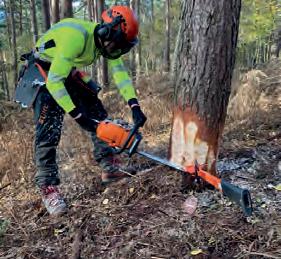

network, connecting arborists to sectors they might not otherwise be able to tap into on page 45. Meanwhile, Sophie Rogers of Arborella explains how refining health and safety compliance can help with corporate accreditation on page 36.
But progress isn’t without its challenges. On page 10, the No Fall Foundation highlights changes needed in accident data reporting and collection to prevent workplace falls. With recruitment remaining a pressing issue, Becky Wilkinson of the Royal Forestry Society unpacks the barriers to attracting young talent and how the industry can respond on page 13.
This edition also spotlights leadership. On page 25, Andrew Brightman, managing director of Gristwood & Toms, shares his vision for nurturing the next generation of
Commercial director – Luke Chaplin
luke.chaplin@eljays44.com
Tel: 01903 777 582
Sales executive – Ollie Finch ollie.finch@eljays44.com
Tel: 01903 777 579
PRODUCTION
Senior designer – Kara Thomas
Printed by Stephens and George Ltd
Published by ©Eljays44 Ltd
CIRCULATION
Subscription enquiries –Ashleigh Burford ashleigh.burford@eljays44.com
arborists while redefining modern leadership. On page 46, Peter Wharton explores why business leaders putting in processes to support neurodiverse colleagues is not just inclusive; it can provide a strategic advantage benefiting all employees. Plus, don’t miss our latest kit reviews and expert insights to keep you ahead of the curve. Here’s to a season of growth. If you have a story for the magazine or you just want to introduce yourself, you can get in touch via edward.brown@eljays44.com or proarbeditor@eljays44.com
EdwardPro Arb is published six times per year by Eljays44 Ltd. The 2025 subscription price is £50. Subscription records are maintained at Eljays44 Ltd, BizSpace, Courtwick Lane, Littlehampton, West Sussex, BN17 7TL, UK. Articles and information contained in this publication are the copyright of Eljays44 Ltd and may not be reproduced in any form without the written permission of the publishers. The publishers cannot accept responsibility for loss of, or damage to, uncommissioned photographs or manuscripts.

MANAGEMENT
Managing director – Jamie Wilkinson
jamie.wilkinson@eljays44.com
Divisional director – David Griffiths david.griffiths@eljays44.com
FOLLOW US ONLINE proarbmagazine.com
Follow us on X @ProArbmagazine
Like us on Facebook
Proarbmagazine
Connect to our LinkedIn group Pro Arb UK
For careers in arboriculture and horticulture go to: horticulturecareers.co.uk
image ©Gristwood & Toms

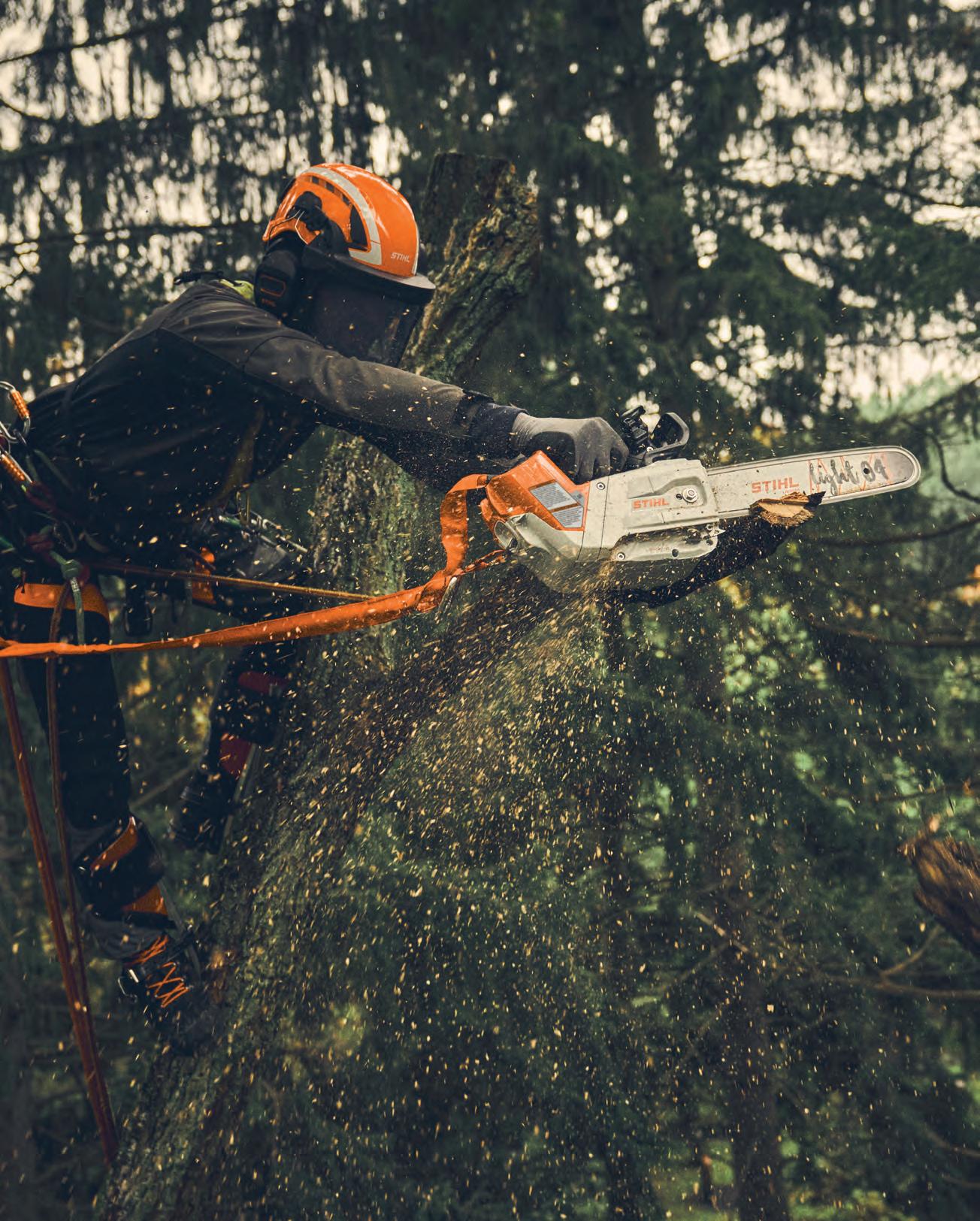

Take on all tree care tasks, from light pruning to removal, with the latest range of professional-grade, high performance tools from STIHL.
With nearly 100 years of engineering expertise, you can rely on STIHL to always have a strong partner at your side.
Legendary performance and quality since 1926.
DISCOVER MORE AT STIHL.CO.UK
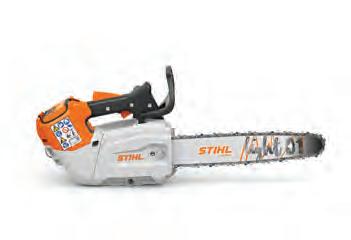
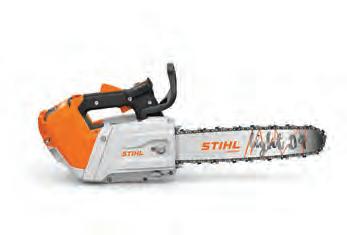
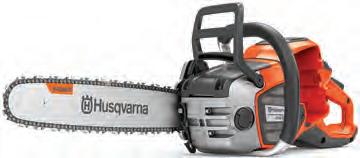
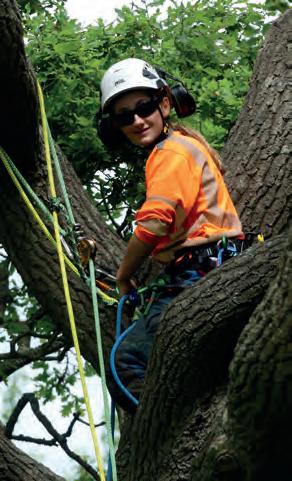
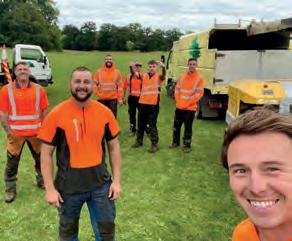
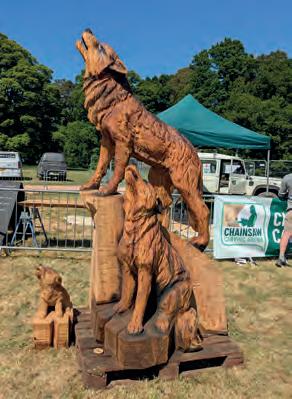
No Falls Foundation chair Peter Bennett
Researchers want to assess canker stain of plane readiness WHERE’S THE NEXT GEN?
Becky Wilkinson discusses solving arb’s youth gap
George Blake on profitable, sustainable
Sunshine and innovation at this year’s show ENGINEERING
Matthew Rowden explains the physics of accident-free arb
Inside an industry-leading tree
Stefan Daines on essential tree care insurance
EZYTREEV: WHAT’S NEW?
Data-driven software for tree management
ARBORELLA CONSULTANCY
Meeting the needs of businesses seeking accreditation
TREE DIAGNOSTICS
Saving trees with innovative tech
ARB PRO: CRM SOFTWARE
Taming business admin with Arb Pro’s digital control
STIHL’S MS 400.1 CHAINSAW
Cutting-edge developments in professional chainsaw manufacturing
Pro-grade battery chainsaw
The network linking arborists to corporate clients
NEUROINCLUSIVE ARB WORKSPACES
Peter Wharton on adapting business practices to neuroinclusion
STARTER GUIDE TO MARKETING
James Catlin talks about trust-based marketing for arb success
ARB CAREERS BEYOND THE TOOLS
Lease or buy? Key equipment investment questions answered
CTC Recruitment highlights post-tool industry career pathways INTERVIEW – BLAKE TREE CARE
ROUNDUP OF
Marlow Ropes awarded Sorbus International its UK Arb Dealer of the Year award at the Arb Show 2025. The manufacturer of specialist ropes recognised the supplier’s brand promotion and support for its new product launches.

Accepting the award, Sorbus director Nicky Wade said: “This award reflects the dedication of our entire team, the loyalty of our customers and the strong partnership we’ve built with Marlow Ropes over the years.”
The Somerset-based company, one of the UK’s largest arb suppliers, received praise from Marlow Rope for “going above and beyond” in championing its products. marlowropes.com sorbus-intl.co.uk
People are urged to stay vigilant as oak processionary moth (OPM) hatching season begins. Found mainly in South East England, OPM caterpillars damage oak trees by stripping leaves, weakening them and making them prone to disease. Their toxic hairs also pose health risks, causing rashes, sore eyes and breathing difficulties in humans and animals.
Dr Edward Straw of the Forestry Commission warns that warm spring weather has sped up their growth, with reports of sightings increasing. The species, previously confined to London, has spread as far as Derbyshire. Residents in affected areas should avoid contact and report sightings via TreeAlert or opm@forestrycommission.gov.uk.

Identifiable by their black heads and grey, furry bodies, the caterpillars colonise oak trunks until late July. The Forestry Commission advises caution in minimising risks to trees and public health. treealert.forestresearch.gov.uk

Two men have been convicted of criminal damage for the unlawful felling of the iconic Sycamore Gap Tree, a 150-yearold landmark along Hadrian’s Wall in Northumberland.
Daniel Graham, 39, and Adam Carruthers, 32, were found guilty by a unanimous jury verdict at Newcastle Crown Court following a nine-day trial. The historic tree was deliberately cut down in the early hours of 28 September 2023. The defendants will be sentenced on 15 July.
Scientists at Kew’s Wakehurst are using bioacoustics to identify trees that best support pollinators, aiding declining bee populations. The ‘Buzz About Trees’ study employs field recordings, computer modelling and acoustic analysis to investigate pollinator activity. Part of Kew’s ‘Nature Unlocked’ initiative, transforming the gardens into a biodiversity lab. Researchers believe trees, which are more space-efficient than wildflower meadows, could enhance
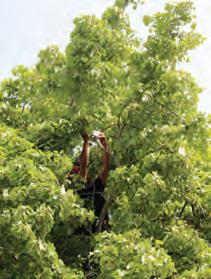
urban pollinator habitats. Eight trees, including Horse Chestnuts and Limes, will host bioacoustic sensors.
Dr Janine Griffiths-Lee explains that this aims to reveal hidden pollinator behaviour and guide greener city planning. The study complements Wakehurst’s Trees for Bees trail, where visitors log pollinator sightings. The combined crowd-sourced and acoustic data may shape future conservation efforts.
kew.org/wakehurst
Forestry England has finished its four-year, government-funded project planting 1.8 million trees across 16 new woodlands, 1,000 hectares, in England, from Yorkshire to Norfolk. The initiative aims to boost biodiversity, provide sustainable timber, and combat climate change through carbon storage and flood mitigation. Beth
Cambridge, head of Woodland Creation, says it is the “largest woodland creation initiative for decades.” She also emphasised community engagement and speciesresilient designs. More woodlands are planned by 2026 in Lincolnshire, the Forest of Dean and Cumbria, pending approvals. forestryengland.uk

In May, Lantra and Landex extended nominations for their Land-Based and Environment Learner (LBEL) Awards to 22 June. The awards will take place on 27 November in Solihull. Categories include apprenticeships (Levels 2-3), higher education (Levels 4-7) and postgraduate research, with top honours for Apprentice of the Year and Overall Winner.
Head of communications at Lantra, Clegg Bamber, says: “Lantra and Landex are extending the nominations deadline to ensure everyone has enough time to submit good quality nominations.” lantra.co.uk
In March, the UK online construction community, On the Tools, hosted a parliamentary breakfast with ABAX UK, Checkatrade and MP Amanda Martin to address worsening tool theft. The event followed their report that
revealed that 78% of tradespeople have been victims, while 85% fear it.
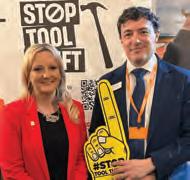
Head of SME at ABAX, Joe MedinaBrowne described tool theft as “more than an inconvenience, but a business-critical issue.” Director of specialised sales at ABAX, Craig Allan added that while “technology plays a vital role” in theft deterrent, “so does awareness, collaboration, and action at a national level.” onthetools.tv
In May, a magistrate court fined a school trust and gave a man a suspended sentence after a falling branch injured a woman and her dog. Bishop Bewick Catholic Education Trust was fined £20k, and the contractor was given a suspended 12-week sentence. The contractor was cutting trees at St Cuthbert’s Catholic High School when a snapped rope caused the accident. The contractor must now also complete 100 hours of unpaid work.
The European Space Agency’s Biomass satellite, launched in April, will conduct the first 3D monitoring of tropical forests using advanced radar. Developed with UK expertise, the five-year mission will

measure forest biomass, deforestation and carbon storage with unprecedented accuracy – even through cloud cover.
Led by University of Sheffield Professor Shaun Quegan, the project aims to transform understanding of the carbon cycle. After 17 months, it will produce 3D maps every nine months, revealing hidden climate insights from Earth’s most inaccessible forests. esa.int
The government has pledged £4m for seventeen research projects to enhance UK tree resilience against climate-driven pests and diseases. The Department for Environment, Food and Rural Affairs (Defra) initiative will focus on breeding resistant trees, including for ash dieback, and developing technologies to accelerate flowering for faster genetic improvements.
Professor Nicola Spence, Defra’s Chief Plant Health Officer, stated: “Tackling the growing threat from plant pests and
diseases due to climate change is critical to protect the long-term health and resilience of our trees.” Projects will also address grey squirrel damage, which causes £35m worth of damage a year, through innovative mitigation strategies.


Head of tree collections and arboriculture at Kew Garden, Kevin Martin, told the London Assembly that climate change is making urban trees more vulnerable to drought and disease. Speaking on 14 May, he warned many current species are ill-suited to rising temperatures, stressing the need for stress-tolerant, adaptable trees rather than aesthetic choices.
Martin highlighted the Swedish city Malmö’s pioneering planting soil mixes, using perlite, biochar and mulch to retain water. He urged similar approaches in London to support tree survival. The warning comes as the city pursues Mayor Khan’s 2018 goal of increasing tree cover by 10% by 2050.
In May, the government pledged £10m for a new genetic surveillance initiative to enhance UK plant and animal biosecurity. Announced during ‘National Plant Health Week’, the Genomics for

Animal and Plant Disease Consortium (GAP DC) will use genome sequencing to detect, track and combat pathogens at borders faster while curbing crossspecies transmission.
Pests and diseases cost the UK economy billions annually, with ash dieback alone projected to cause £15bn in damages. The Defra and UKRI-funded programme builds on past successes, like tracing Xanthomonas bacteria outbreaks in nurseries.

Dr Lisa Ward of Forest Research says: “The genomic methods being developed under the GAP DC project are essential to future proof Forest Research’s work on monitoring the health of our trees by enhancing early pathogen detection, allowing rapid response and more effective disease control.”


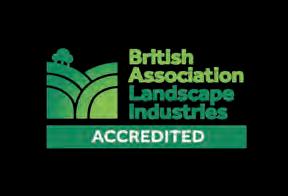
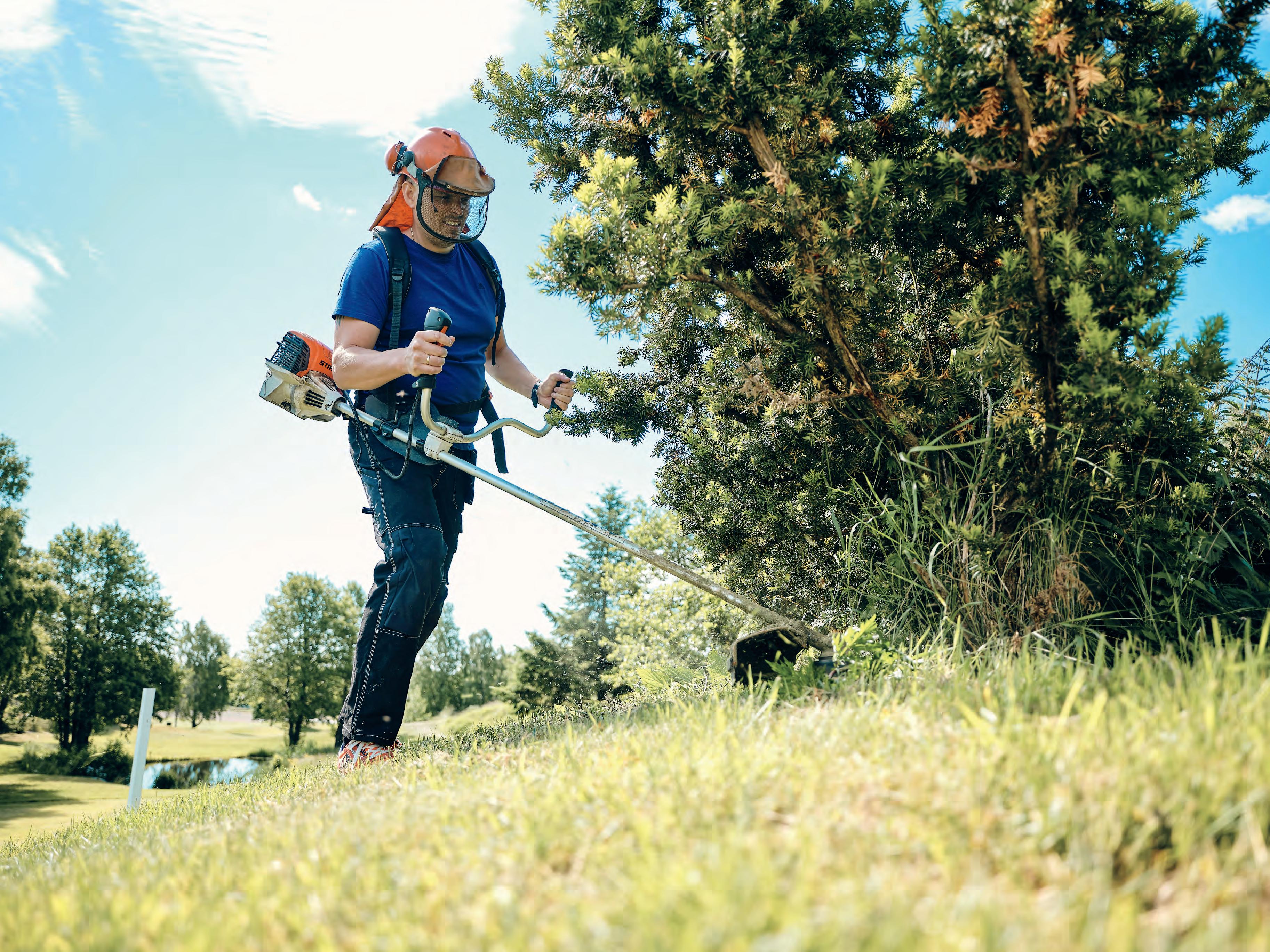




The No Falls Foundation is a unique charity in the UK focused on addressing the serious consequences of falls from heights. The organisation supports victims, advocates for improved safety practices and promotes better data collection to help prevent future accidents.
In May, the foundation conducted its key initiative, No Falls Week, an annual campaign to raise awareness about working at height safety. This year, the charity reports that over two thousand companies participated in the awareness campaign, with nearly eight thousand resources downloaded and thirty-four thousand social media engagements.

Speaking with Pro Arb about the week and the mission aims of his charity, chair Peter Bennett
OBE says:
“Every year, it is quite inspiring to see so many organisations setting aside the time to focus on preventing falls from height. It is pretty special to get health and safety experts and industry leaders together in the same room, learning, listening and sharing knowledge.”
Bennett comments that the aftermath of a workplace fall can be life-changing for professionals and their families. Many victims experience severe physical injuries,
mental trauma and financial hardship. Employers, frequently advised by insurers to avoid admissions of liability, often leave injured workers to navigate complex legal and recovery processes independently.
ONE HUNDRED PEOPLE ARE INJURED BY FALLS FROM HEIGHT EVERY DAY; THAT’S AN AWFUL LOT OF PEOPLE OUT THERE WHO NEED ASSISTANCE
“One hundred people are injured by falls from height every day; that’s an awful lot of people out there who need assistance.” The charity offers a range of support, from legal guidance and befriending services to financial grants for rehabilitation. Bennett states, “Our sole purpose is to help people get the sector to recognise that working at height can be dangerous, and as industries, we need to step up and do what we can to make work at height safer.”
One of the foundation’s most significant challenges is the absence of meaningful accident data, especially from selfemployed workers and small businesses,
to guide safeguarding policies. Current reporting systems, such as the Reporting of Injuries, Diseases and Dangerous Occurrences Regulations, depend on freetext descriptions, which makes identifying trends nearly impossible. We must get a simplified, streamlined way for employers to report workplace accidents,” Bennett explains. “On one end of the spectrum, you have employers who will say the absolute minimum; on the other, organisations who do not understand what is expected of them. That’s the problem with asking people to write free text, you can get from the sublime to the ridiculous.” As a result, the foundation has been pushing for accident reporting reforms in parliament, i.e., through a simplified drop-down menu gathering informative data about an incident.
Bennett says the initial step for a tree care business to support the foundation’s efforts is to become an active supporter. This involves engaging with industry peers, reminding employees to prioritise working at height safely, and using resources on the website. No Falls Week can be held at any time, he says. However, knowing what ‘good’ looks like is the first step in preventing incidents, he adds.
For more information: nofallsfoundation.org
Forest Research began a new tree health survey campaign in March, inviting arboriculture professionals to participate. The Department for Environment, Food and Rural Affairs (Defra) funded project investigates the pathways and practices associated with ‘canker stain of plane’, a significant tree disease. Scientists at Forest Research state they aim to explore the knowledge and practices of tree professionals in the UK regarding tree diseases, work procedures and biosecurity measures. They are particularly interested in understanding professionals’ awareness of the risks linked to arb waste and equipment movement.
Putting biosecurity in focus
Canker stain of plane, also referred to as ‘plane tree wilt’ or ‘Canker of sycamore’ in the US, is a disease affecting several species of plane trees (Platanus spp.). It is caused by the ascomycete fungus ‘Ceratocystis platani’, affecting the tree’s water and nutrient transportation systems, resulting in stem cankers accompanied by canopy dieback. The disease was first detected in Europe in 1945. Since then, it has spread to several European countries, including France, Switzerland and Italy, though it is not yet present in the UK
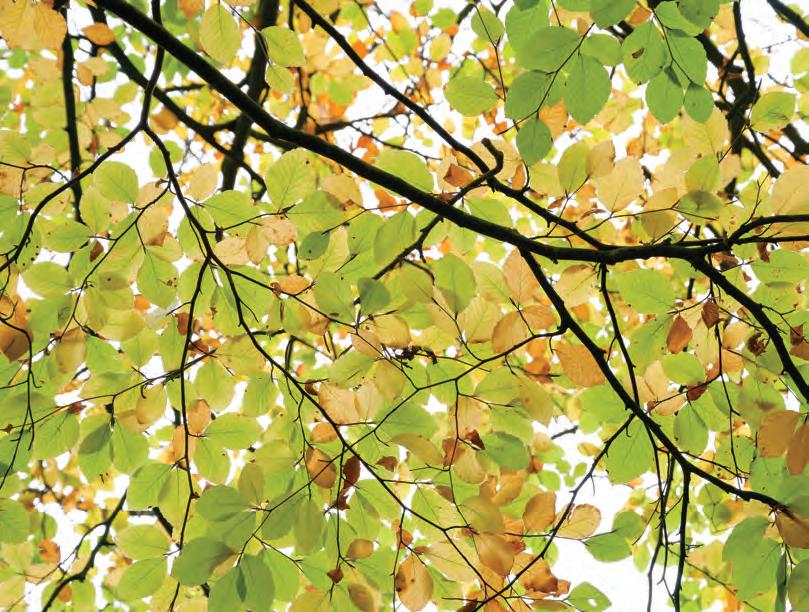
a few minutes of their time would improve understanding of disease spread and bolster UK preparedness. The findings will also help strengthen biosecurity protective measures and develop practical resources for professionals.

At the survey’s launch, Mick Biddle, Forest Research, says: “In the UK, plane trees form an important component of our urban treescapes and are commonly found in our parks, public gardens and lining our streets. They are highly valued in towns and cities for providing shade as well as tolerating air pollution and water shortages.
“Canker stain of plane would pose a significant risk to our plane trees and our urban tree cover. Once infected, trees can die quickly, sometimes in as little as two years.”
Biddle urges tree surgeons, officers and arboricultural consultants to participate in the brief survey, emphasising that even

CANKER STAIN OF PLANE WOULD POSE A SIGNIFICANT RISK TO OUR PLANE TREES AND OUR URBAN TREE COVER. ONCE INFECTED, TREES CAN DIE QUICKLY MICK BIDDLE, FOREST RESEARCH
Forest Research reports that the survey takes approximately 10 minutes to complete. Responses will be anonymised and aggregated for analysis to identify broader trends. If participants choose to provide an email address, it will only be used for follow-up research purposes. Without an email, answers will remain completely anonymous.
Defra warns of rising of disease spread
A Defra spokesperson explains to Pro Arb, “There have been recent outbreaks of Canker stain of plane in northern France, demonstrating the disease is spreading and that plane trees in the UK are at increased risk.” They add that a 2019 Euphresco project urged vigilance as the pathogen advances northwards in European continent.
Defra is funding Forest Research to improve diagnostics, surveillance, and control measures for potential UK outbreaks –including surveying private-sector awareness and biosecurity practices. Notably, this effort is part of the government’s long-term campaign, “Keep it Clean, Don’t Risk It.”
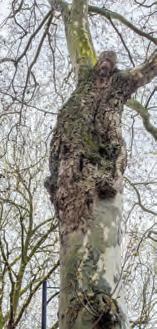
The spokesperson mentions that lessons from affected countries show the disease spreads via contaminated tools, machinery and plant trade, making import controls and worker education critical.
Signs of new pests and pathogens can be reported to the ‘TreeAlert’ website.
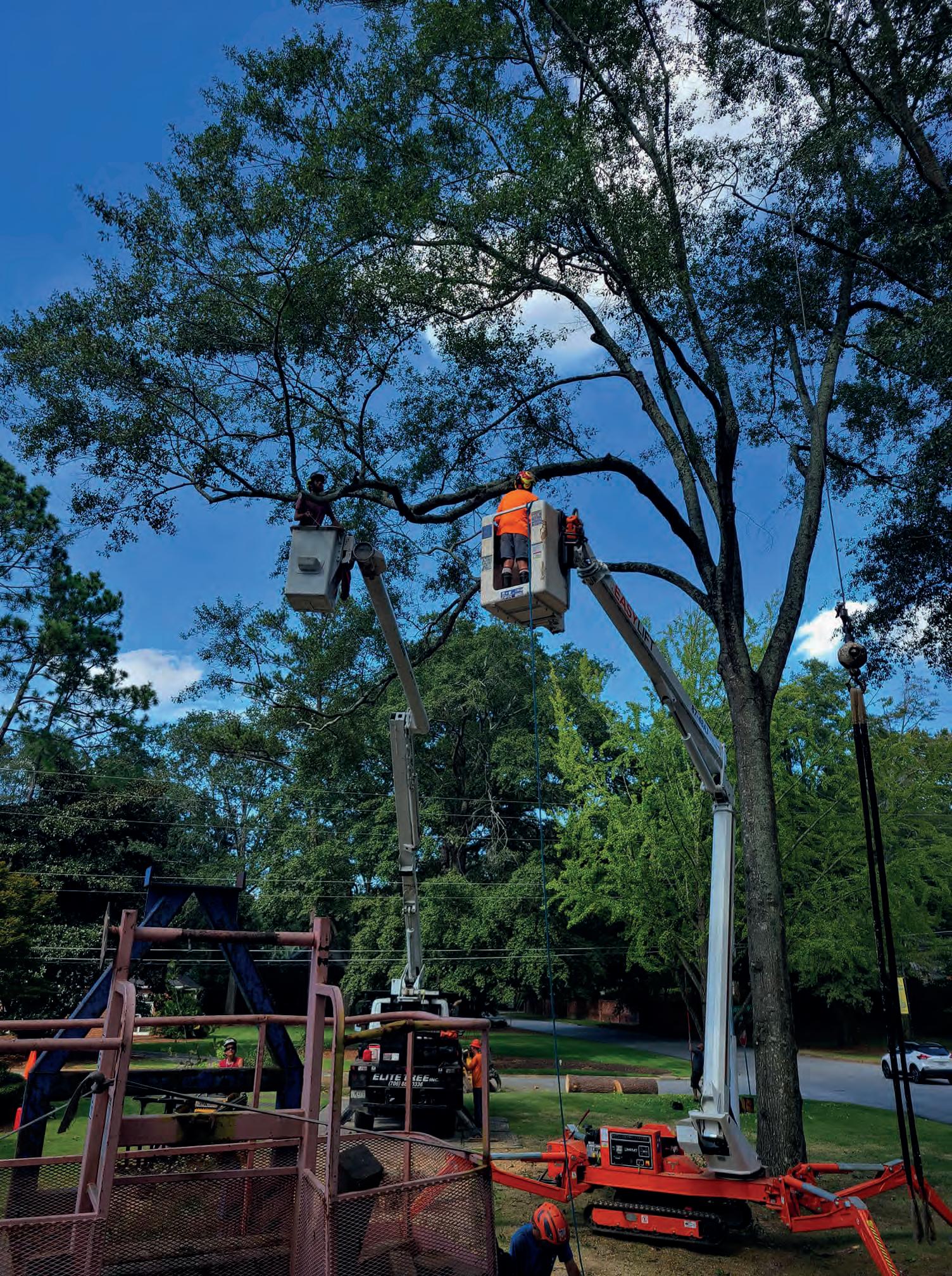


BECKY
In April, the Royal Forestry Society (RFS) launched a call for action for its entry-level ‘Forestry Roots’ programme, encouraging young people to explore careers in arboriculture, woodland management and forestry. Open to 18 to 30-year-olds, the year’s paid placement includes training, relocation and mentoring expenses. Most trainees leave with a Level 2 qualification in Forestry or Arboriculture as a minimum.
At the yearly ‘Forestry Roots’ campaign launch, the RFS highlighted April Office for National Statistics figures showing youth unemployment climbing from 12.8% to 14.6%. The organisation pitched green careers as timely solutions for young job seekers facing a challenging employment landscape. Nevertheless, as the RFS and arboriculture and forestry sectors know well, rising youth unemployment rates alone do not automatically translate to industry engagement and education signup.
Attracting young talent to the sector has been an ongoing, tough problem to resolve. Since 2020, the London Tree Officers Association and the Forestry Skills Forum, have repeatedly flagged difficulties in attracting and training student entrants. Their reports highlight persistent
nationwide skills shortages and labour gaps across the sector. They also identify key challenges organisations face – from securing funding to developing effective outreach programs – in making the industry appealing to younger generations.

Uneven spread of college course placements
According to Becky Wilkinson, also a member of the Forestry Skills Forum, nationwide geographic disparities in college course offerings are a primary constraint on sector recruitment. Referencing an RFS
THERE ARE HUGE SWATHES OF THE COUNTRY WHERE YOU CANNOT LIVE AT HOME AND DO ARBORICULTURE
map listing the locations of the twenty-two colleges offering arb and forestry courses in Great Britain, she says:
“This is problem number one: there are huge swathes of the country where you cannot live at home and do arboriculture at college, or a student will have to travel more than an hour each day. At the RFS, we get calls all the time that go along the lines of, ‘I live in Essex. My child is really keen to get into arb or forestry,’ so we signpost them to the nearest course in North London. But that college is over 70 miles away, as a result, the child goes and does something else.”
The challenging process of getting into the industry post-GCSE
Wilkinson adds that once a prospective student has found an accessible local course, challenges can continue. “Once a young person has finished their GCSEs, their options for getting into arboriculture are generally either an apprenticeship at Level 2 or the T Level. The T- Level is still only available in a handful of colleges in England, and apprenticeships are largely only open to those aged 18 and over because of chainsaw regulations and the need for a driving licence.” Wilkinson notes that this unavoidable safety risk barrier for 16-year-olds diverts many away from arboriculture and forestry to trades like horticulture or bricklaying that offer immediate entry.
Some students may eventually transition from those alternative industries, Wilkinson acknowledges. Though after two or more years of gaining skills in another trade and eventually earning a good wage or postuniversity graduation, many interested candidates are monetarily disincentivised to switch careers. She explains: “They may not want to go back to an apprenticeship wage. We have people getting in touch with the RFS, in their early twenties, who like the idea of becoming an arborist. But can’t afford to go into the sector because the apprenticeship wage offered does not pay your rent.”
Prospective young adult arb learners face a unique sandwiching pressure. They are trapped between necessary chainsaw safety regulations and the financial reality of being on apprenticeship wages much later into their careers than in other sectors.
OUR SECTOR BEING LARGELY RELIANT ON ADULTS WHO CAN AFFORD TO TAKE A YEAR OR TWO ON AN APPRENTICESHIP WAGE IS MAKING ROUTES INTO
Wilkinson concludes that this delay in earning potential during a cost-of-living crisis forces most to rely on relatives or a partner to make ends meet.
“Our sector being largely reliant on adults who can afford to take a year or two on an apprenticeship wage is making routes into the industry harder.”
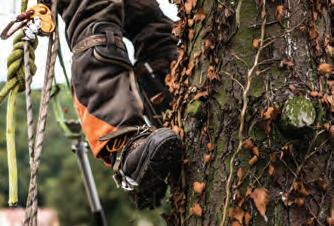

Centring forestry and arb in the values of the next generation
Amid societal shifts and policy changes, the sector has been overlooked, resulting in fewer skilled, willing workers. Additionally, Wilkinson partly attributes a social shift to arb and forestry’s “image problem.” While aspirations for environmental careers grow in popularity, arb and forestry occasionally struggle to appeal to youth. She says:
“A lot of young people say to me, ‘I don’t want to cut trees down, I want to grow them’. I give talks to school-aged children about how healthy trees are managed, but young people want to talk about rewilding and conservation. There is a stronger narrative out there saying, ‘We have damaged nature, we should leave it alone,’ than there is communicating that you need people with the tools to manage those ecosystems. Because it keeps processes healthy, improves biodiversity and carbon capture.”
Addressing misconceptions and situating tree care in the priorities of the next generation is a marketing question that the arb and forestry sectors will need to debate for recruitment and course funding. Wilkinson points out that just two universities in England and Wales offer forestry degrees, and only one provides arb. Yet by her latest UCAS count, one hundred and thirteen conservation-related degrees are available. This situation, she stresses, is similar to what is happening in colleges.
Consequently, Wilkinson argues for a threepronged approach:
• Better school career advice
• Government-backed support to maintain university and college course viability
• Industry-led education to reposition tree care as eco-essential.
Recruitment lessons from Forestry Root In the Forestry Roots programme, all students receive the minimum wage, and they are given a £300 ‘getting started payment’ for students to afford items required for the first day of on-site training. Additionally, some placements offer low -budget rented accommodation. “If I were advising bigger arb firms, I would encourage them to rent a shared house for ease of access. In Forestry Roots, we cannot always provide accommodation, but we try to be creative to help you find solutions.”
The RFS also provides £2,000 worth of training and pays the bulk of the student’s salary, derisking investing in a young person for an employer. Wilkinson explains: “This offsets the cost to their business for the time spent on training and six months or so for a new worker to become national minimum wage profitable.” By contributing to costs, Forestry Roots aims to tackle recruitment’s financial roadblocks, safeguarding the sector’s future one trainee at a time.
For more information: rfs.org.uk
✓ EXCEPTIONAL BUILD QUALITY
✓ UNRIVALLED RELIABILITY
✓ DIESEL OR LITHIUM BI-ENERGY POWER
✓ EASY TO OPERATE
✓ SMART FEATURES TO ENHANCE SAFETY AND PRODUCTIVITY
THE TREE SURGEON’S FAVOURITE HINOWA LIGHTLIFT 20.10 PERFORMANCE IIIS
WORKING HEIGHT: 20.10m
WORKING OUTREACH: 9.7m
POWER: Diesel/110v Cable
TRANSPORT: 3.5t trailer
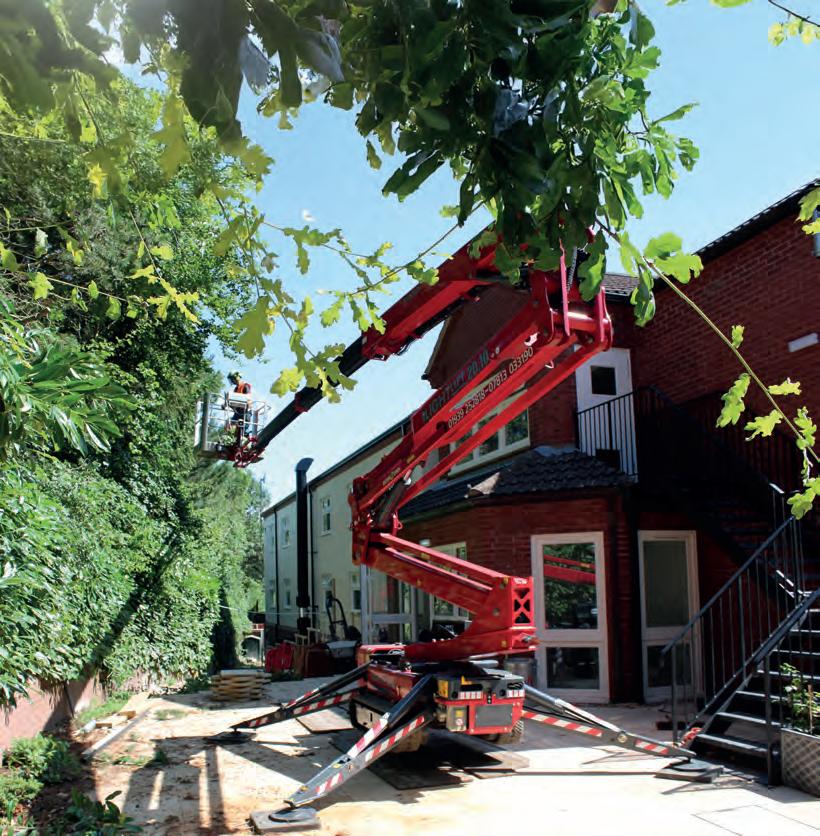

ULTIMATE VERSATILITY HINOWA LIGHTLIFT 18.80 PERFORMANCE IIIS
WORKING HEIGHT: 18.55m
WORKING OUTREACH: 7.8m
POWER: Diesel/Lithium Battery
TRANSPORT: 3.5t trailer
• Silent and zero emissions for sensitive locations
• Saves fuel & ideal for renting for extra income
Access Platform Sales has proudly supplied Hinowa’s tracked equipment to the UK arboriculture and forestry sectors for nearly 20 years.
They include spider lifts (13.3m to 40.2m), minidumpers (400kg to 2,875kg) and forklifts (1,600kg & 1,800kg).
Attractive
Competitive service plans to keep your machines working safely and productively
Mobile maintenance support delivered by our in-house team of experienced engineers

HOW CAN PROFITABILITY BE COMBINED WITH PLANET-FRIENDLY PRACTICES?
IN THIS Q&A, GEORGE BLAKE , FOUNDER OF BLAKE TREE CARE , DISCUSSES HOW SUSTAINABLE ARBORICULTURE CAN DRIVE ANNUAL GROWTH.
Arboriculture and environmental sustainability go hand in hand, yet adopting greener practices –particularly in machinery – presents real challenges as technology evolves. While many businesses struggle to balance eco-conscious choices with operational demands, some are leading the way, proving that sustainability can drive both community-based impact and business growth. At the forefront is Blake Tree Care, initially established by George Blake in 2012, beginning with a limited range of equipment and undertaking small-scale work. Over time, it steadily grew in scale and ambition, evolving into the fully developed operation it is today. The company’s eco-conscious approach to green waste proves that environmental responsibility can be a viable revenue stream.
Setting the pace in Essex and Suffolk, Blake Tree Care recycles all green waste from
tree operations. Woodchip is repurposed for local gardens and biomass facilities, and a specialised mulching system converts organic material into nutrient-rich compost, enhancing soil health and supporting
PROFIT AND PLANET ARE NOT MUTUALLY EXCLUSIVE — THEY CAN COMPLEMENT EACH OTHER WHEN APPROACHED WITH INTENT AND INTEGRITY
circular economy principles. Complementing these sustainable practices, the company is transitioning to electric and batterypowered equipment, further reducing its
environmental impact. These operational commitments reflect Blake Tree Care’s business ethos.
The company has active links to the Arboricultural Association, high staff retention and consistent turnover growth of 50% year on year – demonstrating its values of professionalism and environmental responsibility.
Owner George Blake shares how sustainability drives his company’s success and how he leads from the front.
How can an eco-conscious approach be profitable?
“An eco-conscious approach can be both environmentally and financially sustainable,” says Blake. “We’ve found that customers increasingly value environmentally responsible practices. By reducing fuel use, managing waste sustainably and investing in battery-powered tools, we’re not only
reducing our environmental footprint but also appealing to a growing base of clients who share those values.” He adds that long-term savings in fuel, maintenance and brand reputation can all contribute to profit margins. “Profit and planet are not mutually
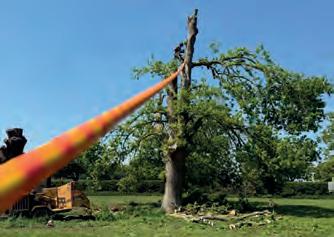
exclusive – they can complement each other when approached with intent and integrity.”
Early on, Blake recognised an opportunity; by investing in a composter, they turned green waste into profit. Today, instead of burning or outsourcing waste disposal, Blake Tree Care transforms debris into a sellable product, closing the loop on sustainability.
What lessons have been learned in adopting battery-powered equipment?
“Transitioning to battery-powered equipment has brought challenges. Upfront costs can be significant, and early models didn’t always offer the durability or runtime needed for a full day’s work. There were also practical issues – battery storage, charging infrastructure and retraining the team.”
However, Blake says he and his team have learned through “strategic adoption”, rather than trying to replace everything overnight. He adds that for certain tasks, like hedge trimming or climbing saw use, they now primarily rely on battery-powered tools, while heavier work may still use petrol. Regarding one
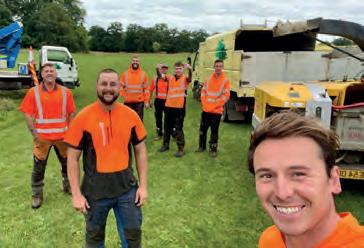
key lesson, he notes that success came from team inclusion. “Change is easier when your team is involved in the decision-making,” Blake emphasises. The proof came in benefits they could experience firsthand – like reduced noise, lower vibration and cleaner air.
“We noticed as we began to use electric saws that it’s not noisy, it’s quiet. You can have a conversation with people nearby. Though some are reluctant, especially with ground saws, up in the tree you can put a larger battery in that top handle chainsaw, and that is cut just as quick as a petrol saw.”
At Blake Tree Care, leadership isn’t just about directing employees – it’s about setting the tone of professionalism from the top down. For Blake, leadership means giving everyone a voice and leading by example, “whether that’s showing up on time, treating clients with respect or holding
ourselves to high standards.” Best practice, in his view, means doing things right even when no one is watching: using correct techniques, maintaining tools and ensuring clients and the environment are respected.
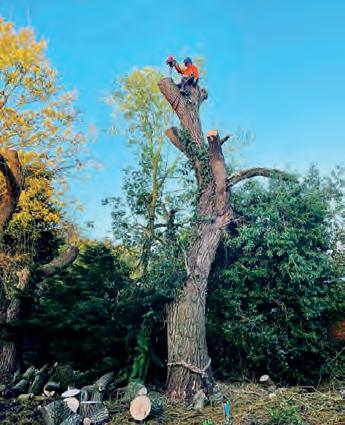
“It’s about aiming for high standards but also being honest and practical in how we deliver them.
Leadership at Blake Tree Care is about responsibility and consistency.”
A part of that standard, he says, is “going above and beyond” for customers. This includes emptying green waste bags or moving plant pots back
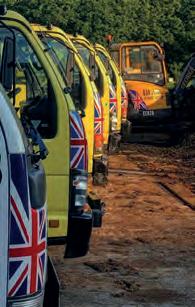
– “adding those finesse touches for people.” If something goes wrong, like property damage during work, “you need to stand up and fix what you have done wrong.”
Blake states that his company’s communityfocused business means being a reliable, respectful presence in the lives of both its clients and team. “For staff, it’s about providing steady, meaningful work, investing in training and maintaining a workplace culture that values wellbeing, safety and fairness. For customers, it’s about being approachable, honest, and willing to explain what we’re doing and why – not just rushing in and out of jobs.”
“We also try to support local initiatives, work with local suppliers and give back where we can – whether that’s through donating time to local green spaces or helping residents understand the trees they live with,” he explains. He advises that if a company is looking to grow its local brand recognition through community outreach, a good place to start is local parish councils or local councillors. “I think a lot of people concentrate on social media. Although it is more than that. It is having your card, being in place and getting customers.”
Thinking about the heart of his company, Blake concludes: “It all comes down to communication and giving back. With your employees, it is paying good money, offering them incentives and boosting their morale when a job is done well. With customers, it is taking the time, doing things correctly and giving them your backstory. And, in your company, it’s thinking about the future and what that can mean for your business practices.”
For more information visit: blaketreecare.co.uk
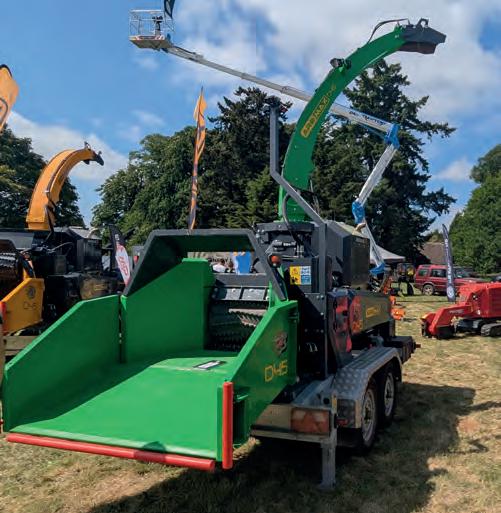

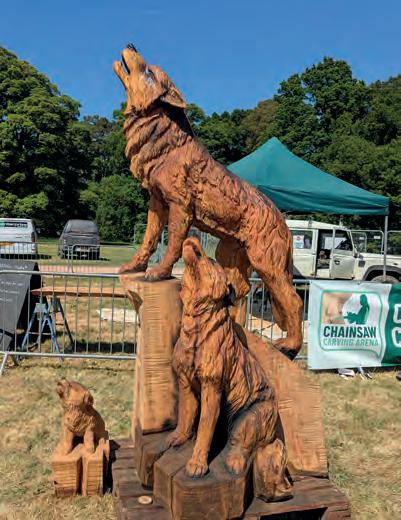


Under the bright blossoming spring weather, this year’s Arb Show was not just a showcase, but it was a proving ground. The flawless weather turned the exhibition into a celebration of the sector – arborists and manufacturers tested the limits of new and old equipment, and traded industry knowledge with their peers. Innovation here was not abstract; it was tactile. It was in the steel machinery and carbon fibres, each tool having something fresh to offer.

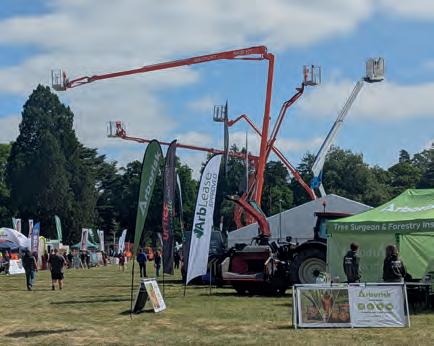

“We really enjoyed the Arb show; it’s our favourite show of the year. Full of potential customers who are very knowledgeable about the products on display,” says managing director Richard Martin. He continues: “We used this show to preview our new product the RA21, and we are delighted with the response it received.” The RA21 is a tracked aerial platform with a 230kg safe working load throughout the complete working envelope, a compact design and automatic self-levelling. It can reach up to 10m horizontally at a height of 10m, with a maximum working height of 21m. It has extending tracks (830mm to 1100mm), a Kabuto diesel engine and a 240V electric motor. It comes with radio control, air and water supply to the basket, non-marking tracks and sliding foot pads, weighing 2,850kg in total. Martin mentions that customers can arrange demonstrations and “we have also negotiated a special purchase price for the first six RA21 platforms sold into the UK market.”
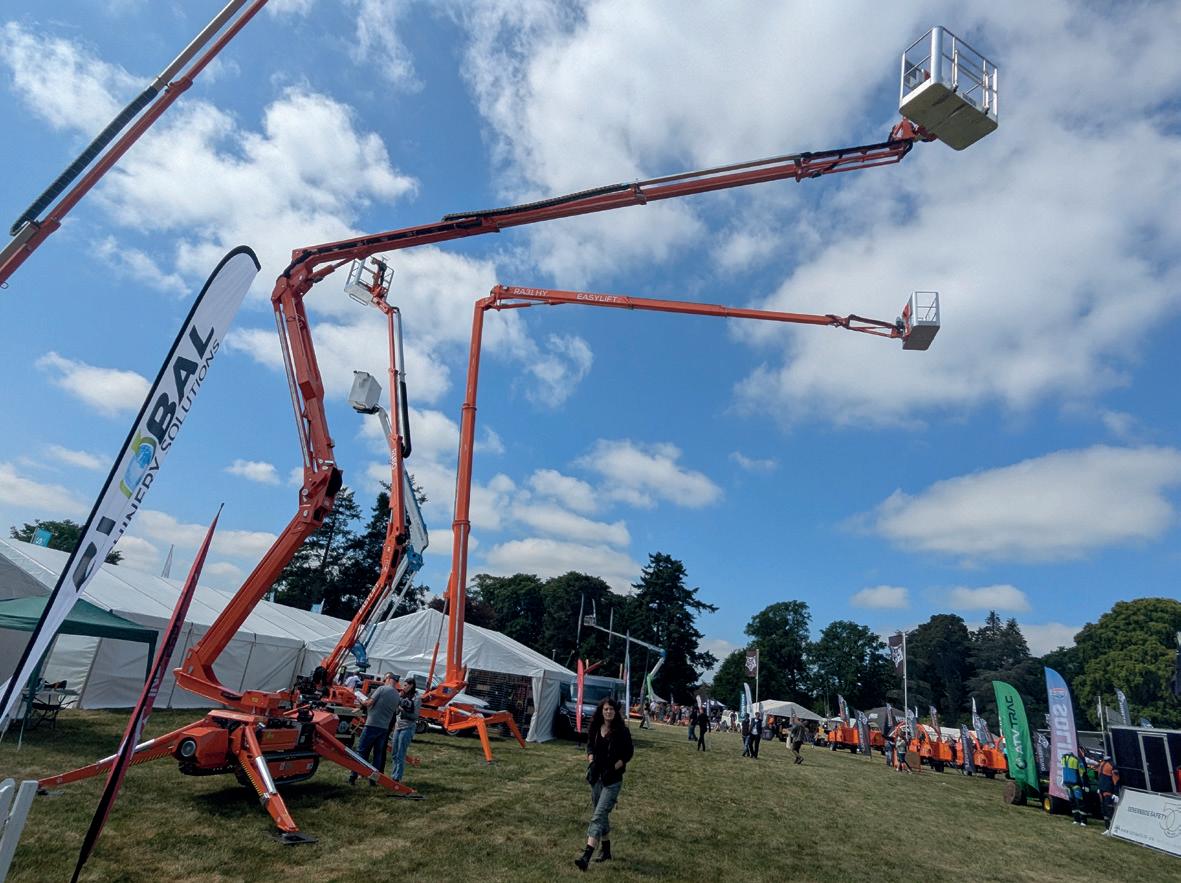
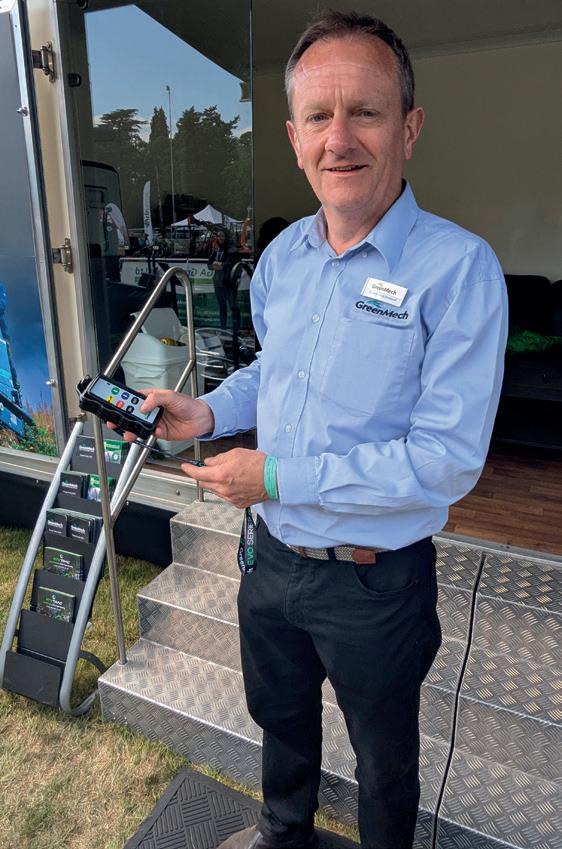
At the Arb Show, GreenMech showcased its SMART FEED REMOTE system, a new feature designed to enhance the functionality of its EVO chipper range. GreenMech state that this system enables operators to control feed rollers and engine speed remotely, removing the need to stand directly beside the machine. The handheld remote offers several advantages, including enhanced control over material flow, improved visibility during operation and increased safety by reducing exposure to dust and moving parts. It also streamlines workflow by allowing adjustments from a distance, saving time and effort when mechanically loading for example. With a 50m range, the system includes a waterproof control box and two durable, splashproof remotes. The SMART FEED REMOTE is also compatible with existing remote track systems.
CBS Products (KT), the UK arm of Klein Tools for overhead lines, offers a range of operating insulated poles suitable for use up to 66kV per ENA Technical Specification 41-2. Sales director Toby Harrison says: “These new 4ft poles are made from lightweight resin-impregnated fibreglass of a high electrical insulation grade and can be interconnected on site to form the required length.” CBS Products offers a range of adaptors for the rods, including pruning saws and electrical overhead line equipment together with a range of other accessories including clamp, hooks and earth adaptors. “There will shortly be an option of a new high-quality protective rod bag with a hard base, foam protection and a spine. We will also be adding a range of CE-marked tool tethering kits to our product portfolio.”
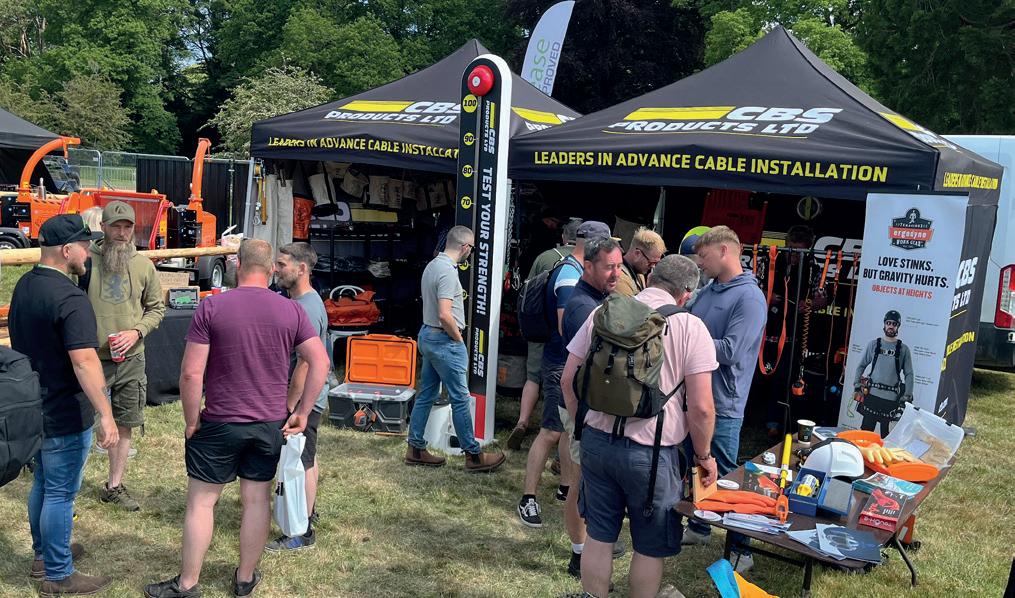
Timberwolf presented the latest member to the pack at the Arb Show, the TW 280HB DIESEL wood chipper. “Timberwolf wood chippers are at the heart of so many arborists’ businesses,” says managing director Chris Perry. “We regularly seek feedback from the arborist community, and the primary product they wanted to see return in 2025 was an 8” diesel woodchipper.” Timberwolf states that every element of this wood chipper’s design reflects its ‘easy-to-use, easyto-own’ methodology. The TW 280HB DIESEL features a wide feed funnel for brash and a flat tray for cord wood, while the lifting top roller minimises kickback. User feedback is driving upgrades like replacing the throttle cable with an electronic system integrated into the side controls. The machine also introduces accessible diagnostics via a robust HMI display, simplifying troubleshooting and operation for users and dealers.

The new Laski 390 stump grinder measures 26 inches in width and features a central turntable pivot for grinding. It includes a fold-over handle, front and rear lifting points and transport handles, allowing it to fit in most vehicles. The machine is based on the Laski 360SW but has a 14HP Kohler petrol engine. Louis Phillippo, group arboricultural specialist at Ben Burgess, states: “This was our first ever Arb show exhibiting the Laski and it has been a brilliant time.” He highlights the Laski 390 stump grinder’s “strong performance” and compact design.
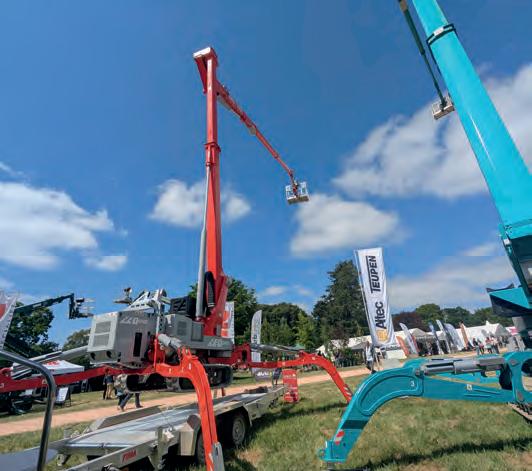
James Skinner, technical sales manager, says, “It is great to be showcasing the all new Teupen LEO24GT at the ARB Show 2025.” The LEO24GT boom lift weighs 2,990kg, meaning it can be towed on a lightweight trailer without exceeding the 3.5t limit. It reaches a height of 24m and has a maximum outreach of 12.8m. The updated chassis and track system improve stability on uneven terrain. A 165° independent working jib also has been added for further flexibility. Skinner notes that the redesign additionally makes the machine narrower than previous models, with a maximum width of 0.89m. The machine is fully radio controlled with the added option to plug in for a direct hard-wired connection to the machine.
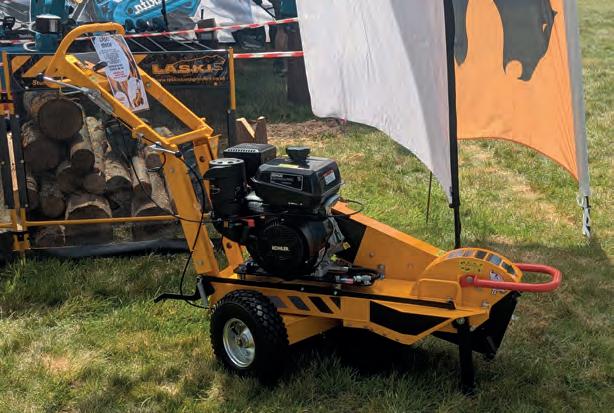
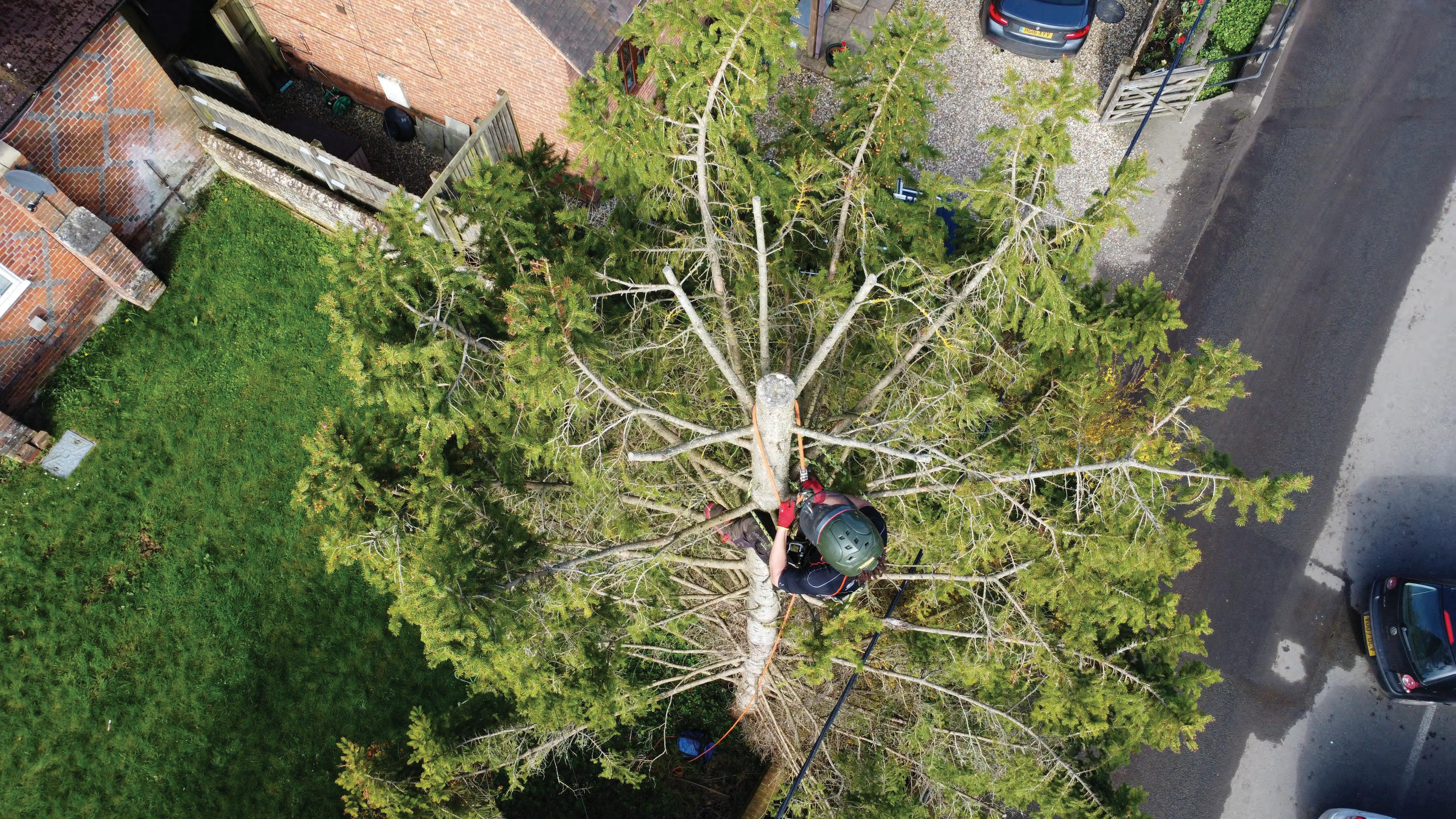
You’ve got the passion. Now get the skills to match.
Lantra’s expert-led arboriculture training and qualifications give you the tools to:
• Work safely and confidently with chainsaws (including battery powered tools)
• Advance from ground-based to aerial techniques
• Understand tree inspection and maintenance
• Stay safe in the forest with our dedicated First Aid +F course
• Earn industry-recognised qualifications that progress your career
Whether you’re growing your career or leading a team, there’s still time to make your next move.
RIGGING ISN’T JUST ABOUT STRENGTH, IT’S ABOUT PHYSICS. MATTHEW ROWDEN EXPLAINS WHY TREE SURGERY’S MOST DANGEROUS MISTAKES HAPPEN WHEN EVERYTHING SEEMS SAFE

When rigging, it is highly important to understand how the loading of rigging systems works, where the possible points of failure are and how and when things can go wrong. Nonetheless, this is an often-overlooked subject within the day-to-day operations of tree surgery. I remember being baffled as a 20-year-old when I snapped a brand-new lowering rope with an eight tonne breaking strain, lowering a piece that couldn’t have weighed more than a tonne. It simply didn’t make sense. Besides the fact that I almost killed everyone working underneath me, the ordeal shook my faith in the equipment we use: how could a 16mm bull rope be snapped so easily? I had never even heard of safe working loads, let alone understood what they meant. In tree surgery, we do not deal with known quantities. Despite the timber index guidelines, most of a climber’s decisions still come down to guesswork.
Safe working loads
Safe working loads (SWL) are the amount

that a rope or piece of hardware can be loaded with safely and are calculated as a ratio of the minimum breaking strain (MBS). These factors range from 10:1 for ropes and slings, and 5:1 for hardware (pulleys, carabiners, rigging plates).
An example would be a lowering line with an MBS of 100 kilonewtons (kN): this then goes on to have an SWL of 10kN, or approximately 1020kg. A piece of hardware with an MBS of 100kN may be used safely with a loading of 20kN, or 2040kg.
SOME STUDIES HAVE ESTIMATED THAT A RUNNING BOWLINE WILL RESULT IN A 45% STRENGTH LOSS WHEN CHOKED TO A LOG
Sounds straightforward, then? Estimate one-tenth of the breaking strain of the weakest component and work within those parameters. Truth be told, that’s how
I’ve done it for years, but it’s not so simple, because those calculations assume you’re using brand-new equipment. Ropes will suffer from sunlight degradation, and hardware – even steel – can only be cycled so many times before it eventually fails. This is why aeroplanes are retired to the Nevada desert after a certain number of take-offs and landings, and why I make a point of replacing climbing lines annually.
The breaking strain of ropes is tested as a straight-line pull. Whenever you tie a knot in a rope or run it through a pulley, you stretch the outer core of the line and compress the opposite side. This will always equate to strength loss. Some studies have estimated that a running bowline will result in a 45% strength loss when choked to a log. This also applies to pulleys: when run through a block, a bend ratio of 4:1 must be applied – e.g., a 16mm rope must go through a 64mm pulley – which will equate to a strength loss of 15%.
This is where things get complicated. Take a typical setup: a 16mm rope with a SWL of 10kN. If you use a bowline to choke logs and run it through a 64mm block, the SWL
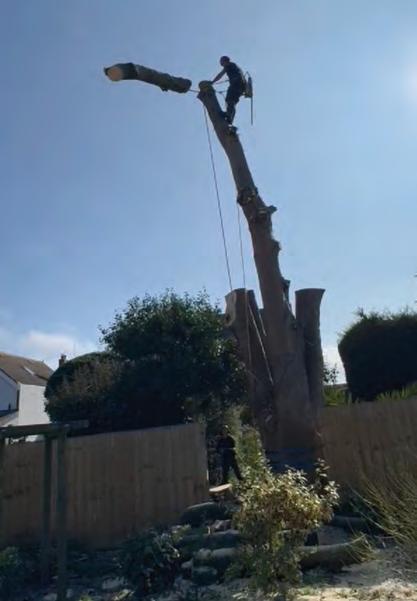
plummets to just 55% of the original, down to 5.5kN. As a result, despite a heavy-duty rope having a 10-tonne breaking strain, it has a functional SWL of 500kg in realworld conditions.
But the challenges don’t end there. Due to system dynamics, rigging anchor points experience roughly double the load of the suspended weight – accounting for minor friction losses. While your rope may only carry 5.5kN, the block now bears 11kN, still within its SWL, but this means your anchoring sling must also be capable of holding that weight.
One common part of rigging in arboriculture – and possibly the most unpleasant to perform – is dynamic loading or snatching. This is where a seasoned hand on the lowering bollard can make or break a job, and the climber can end up being thrown around the tree. When a piece of timber drops into the system from above the anchor point, it will accelerate into the system, meaning it will
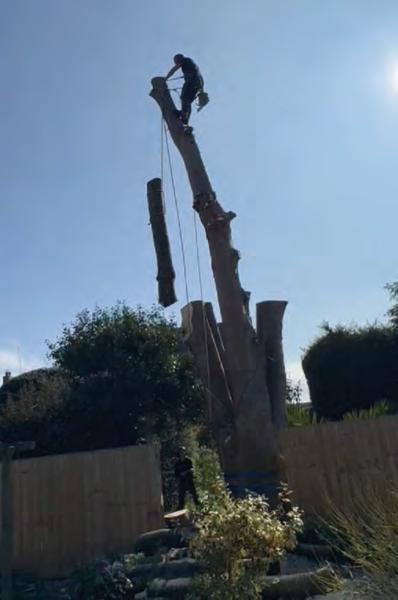
have acquired some kinetic energy in doing so. An object’s power when falling – kinetic energy – depends on two things: how heavy it is (mass) and how fast it’s moving (speed).
AN UNDERSTANDING OF THE DYNAMIC FORCES INVOLVED WITH RIGGING IS CRUCIAL TO KEEPING CLIMBERS AWAY FROM HARM AND AVOIDING COSTLY MISTAKES
The faster it goes, the harder it hits. Double the speed means four times the force.
Imagine a 560kg log falls for just one second – the yank on the rope isn’t just the log’s weight. That quick tug can hit with over 2.5 times the force, like suddenly having to hold 2,700kg instead. That means the force exerted on the rigging anchor point is over five tonnes.
This is highly significant, then: it explains why occasionally ropes and slings will
Setting myself up for a snatch with Arb Elite Tree Care. I estimated the initial weight at around 250kg.
The timber entering the system: there was very little room to decelerate the timber, so I would estimate that it fell for one second, and the lowering line bore the brunt of the impact.
The garden remained in one piece: but this 18mm lowering line was loaded with approximately 1224kgf. It had an MBS of 7700 daN, so the maximum load it should have had was 785kg. Often, the wear and tear on the separate components of the rigging system vastly outweighs any perceived gain in time or timber value.
fail when loaded with far less than their breaking strain, and why I’ve succeeded in snapping rigging anchor points over the years. It is also why a good groundsman who is able to gently decelerate the load is so important. When dealing with forces this large, the potential for serious injury or death is very high.
An understanding of the dynamic forces involved with rigging is crucial to keeping climbers away from harm and avoiding costly mistakes. Not a bad thing to aim for in a job where there are very few certainties, and much of it relies on luck and guesswork. What is certain is that maths doesn’t lie, but ageing gear does. That’s why disciplined cycle tracking and proactive equipment replacement aren’t just best practices; they’re the invisible safety nets that catch us when experience isn’t enough.
Matthew Rowden ProfDipArb ABC L6, NatDipArb BTEC L3 has over 20 years’ experience within arboriculture and runs Rowden’s Tree Consultancy and Training. rowdentreeconsultants@gmail.com
• Geoweb is the original Geocell co-invented in the 1970’s by Presto Geosystems.
• Geoweb TRP was the first Geocell used and approved for tree root protection applications in the world.
• Patented Atra Key connectors. Fastest, safest, most cost-effective connection mechanism.
• Project specific design available.
• Geoweb is available from 75mm to 300mm depth.
Greenfix are pleased to offer a CPD approved Guide to Tree Root Protection seminar which can either be hosted online or in person.
To book a CPD contact us on the details below.




• Geoweb TRP 200mm deep system, New ECO Dwelling, Liff, Angus.
• Temporary use for demolition, construction traffic and 60 ton crane loadings.
• Fully designed the Greenfix engineering team.
• Clean free draining infill to allow percolation of water and maintain aeration.
• After the building work the Geoweb was recycled, and the stone infill re-used on other areas of the site.

Greenfix is the leading designer and supplier of soil stabilisation and erosion control systems in the UK.
Gristwood & Toms isn’t your typical arboriculture firm; it puts its head above the canopy. For fifty years, since its founding in 1974, the company has cultivated not just trees but legacy, a fact now underscored by its 2024 acquisition by Nurture Group, the titan of landscape maintenance. Headquartered in the hedgerow folds of Hertfordshire, Gristwood & Toms’ influence stretches far beyond those green borders. It is an established multi-million-pound, nationwide industry leader renowned for its specialist technical expertise and unwavering sustainability ethos. That reputation was further solidified in April at the eighth annual Pro Landscaper Business Awards. At the event, bringing together top industry talent to celebrate excellence and innovation, Gristwood & Toms took home the Arboriculture Company award. The organisation earned praise from the judges for its “dedication to the industry, its staff and the environment.”
Yet behind every recognition by industry peers stands a dedicated team – and at its helm, an architect directing everything in motion. That leader is managing director Andrew Brightman. His horti-arboriculture career roots run as deep as the trees his company tends. Brightman’s journey began at Brophy Ground Maintenance, where early

ANDREW BRIGHTMAN ,
MANAGING DIRECTOR
OF GRISTWOOD & TOMS , TALKS TO ARB PRO ABOUT THE BUSINESS AND LEADERSHIP STRATEGY BEHIND AN INDUSTRY CHAMPION

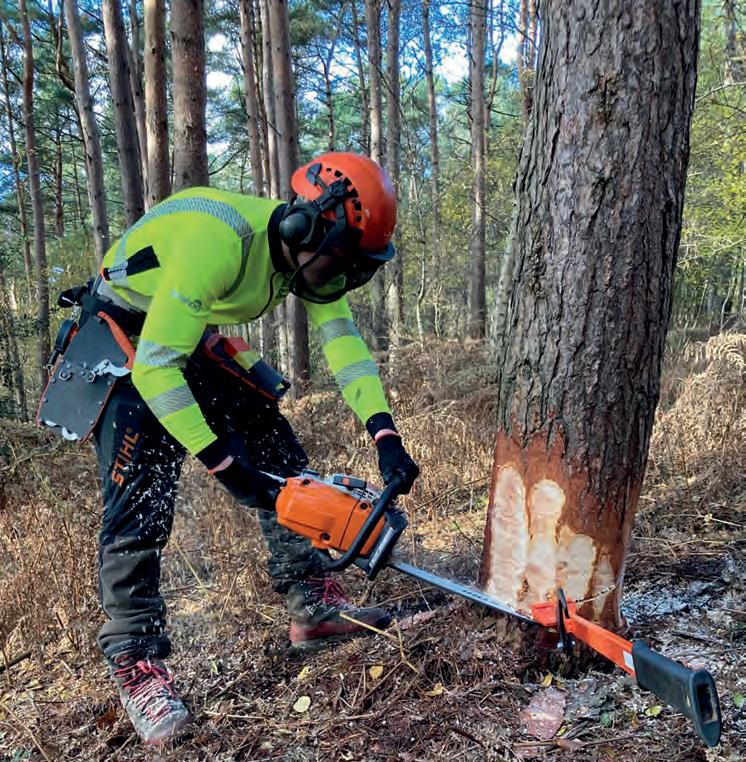
collaborations with Gristwood & Toms seeded what would become a defining partnership. After thirty-five years honing his expertise in the greenthumbed sectors, Brightman was appointed Gristwood & Toms’ managing director in 2024. Since then, he’s spearheaded a regional management model, green-tech investments and upskilling programmes. Yet his leadership of Gristwood & Toms
isn’t just about machinery or margins –it’s a case study in resolving industry-wide pain points. As arboriculture grapples with labour shortages, difficulties communicating its social value and the green-tech transition, Brightman’s blueprint offers answers.
In this interview, Pro Arb explores how Brightman’s decisions aren’t just relevant to one company – they’re a starting point for discussion into solutions for the sector’s thorniest challenges.
A hands-on approach to adopting eco-tech Gristwood & Toms’ success is not an accident but is a result of a long-term strategic vision. Brightman starts our interview by setting out his long view concerning the company’s environmental impact. He points to the electrical charging points recently installed in the car parking lot. “One of the things Nurture Group brought to the business
GETTING THE TEAM TO START AND SEE AND TOUCH, TO WORK WITH ELECTRIC EQUIPMENT, HAS BEEN REALLY INNOVATIVE
was change,” he says. “It is a massive part within Nurture Group to look at innovation, look at improving the environment we live in.” He then pauses and adds a pragmatic caveat: “Of course, there are challenges, questions like – ‘is the sector ready yet?’ But I think there are some quick wins, whether it’s a company car that’s electric or getting infrastructure fitted.”
Throughout the interview, it was clear that the transition to full eco-tech in the arboriculture industry remains for now firmly on the horizon. While battery-powered kit grows increasingly advanced and cost-effective, even the most ecologically progressive firms still rely on hybrid solutions. Nevertheless, Brightman is optimistic that, as with electric chainsaws and cars, more “quick wins” will come as suppliers and arborists come together for a handson experience of newly developed tech. “Getting the team to start and see and touch, to work with electric equipment, has been really innovative. On June 5, we are hosting a Gristwood & Toms ‘Go Wild’ event,” Brightman explains. He adds that this event is not merely a company and supplier gathering, nor just another demonstration. He describes it as a “mini-Arb Show”, empowering colleagues to test, question and collaborate – actively shaping their company’s green transition. The event is also an opportunity to invite clients and subcontractors to share industry knowledge and “group the right minds in the same space.”
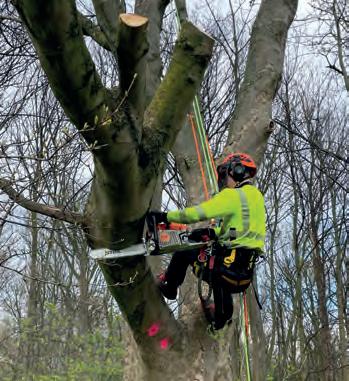
Brightman emphasises that a further key feature of the company’s eco-tech approach is the use of Aspen Fuel. This synthetic fuel contains significantly less hydrocarbons, a polluting compound found in unrefined fossil fuels. Even though he notes that using the Aspen is a financial and safeguarding compromise. A higher upfront cost, but on the other hand, leading to overall savings from increasing longevity of the machine, and reduced health risk to climbers working chainsaws due to the lower output of harmful emissions.
Investing in the future of the sector
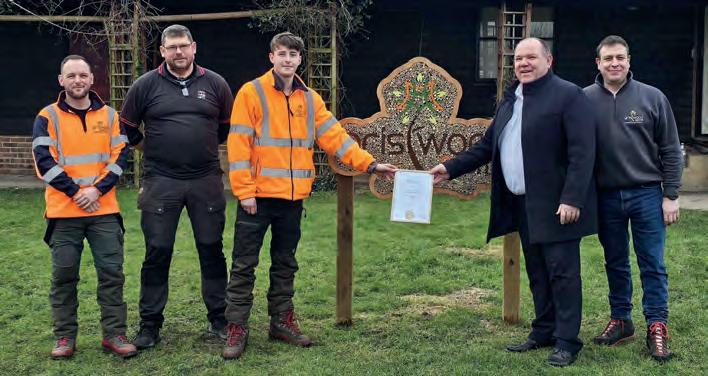
On the way to Gristwood & Toms’ dedicated training academy classroom, Brightman clarifies the reasoning behind his organisation’s twoyear apprenticeship programme. “Training people up is one of the challenges we face in arboriculture – how many companies are out there investing in the next generation? We cannot just be employing people taken from somewhere else.” He continues that the programme provides structured, practical and coursework-based training five days a week. In classes of no more than four, the apprentices receive the Real Living Wage (higher than the government’s minimum, or National Living Wage) and gain in-depth knowledge of the industry. This multiple-thousand-pound investment is more than solely PPE and equipment, Brightman stresses; it is a down payment on the next generation. He says: “It is building confidence, creating the routine, the culture – setting the standard. Making sure everyone complies with all the processes, and they all go home safe.”
In the classroom, simple standards of excellence can be seen in the disciplined tidiness of the four red toolboxes, aligned perfectly along a desk. Yet on a higher
level, excellence has also been displayed by the Gristwood & Toms students when they have to put their skills to the test in real-world situations. Brightman recollects a story where a 19-year-old student had to put their first aid training to use outside of work. “One of our apprentices who had worked for us for six months took control of a situation where a person fell down an escalator. The security guard wanted to move this person, and our apprentice said ‘no.’ Because he had learnt first aid with us.” He goes on to add: “At times, you realise how young these people are. I work in an environment of strong, professional, very

experienced colleagues climbing trees –they’re real thrill seekers! Then you meet a young person who wants to get into arboriculture, but how do you harness that enthusiasm? You take them on a journey. You see them change, you see them grow up and you see their accountability – their want to learn.” As part of that journey, training includes the chipper, different cutting techniques, aerial rescue and importantly, first aid overseen by an inhouse City & Guilds principal assessor.
Empowering teams by giving them accountability
Sitting down in his office, Brightman talks business. He unrolls a large map across the desk, an organisational chart. It’s structured lines branching out from the wider Nurture Group to him, then to Gristwood & Toms’ regional managers and tracing down to departments and individual colleagues. Brightman explains that this is one of the first big changes he took charge of when taking over the leadership of the company in 2024. The reorganisation shifted the business structure from a flat, horizontal model to the more layered one used today. He adds that the purpose of that restructuring was to embed a culture of accountability and responsibility across teams while establishing crystal-clear reporting lines. “Previously, every manager reported to the founder. However, by reorganising, we have positioned the business for future growth in line with the wider Nurture Group strategy, which has enabled clearer communication about business performance and boosted both motivation and accountability,” he says.
I SEE INVESTMENT IN PEOPLE AS LEADERSHIP. THIS INCLUDES TRAINING, ADDING VALUE AND REACHING OUT TO THE COMMUNITY
The reorganisation wasn’t just about defining who reports to whom. For Brightman, it was about giving his colleagues something tangible: a way forward. The new structure maps out career development pathways, ensuring the gradual upscaling of junior colleagues

to senior management. A case in point Brightman describes is the ambitions he sees for one of his 17-year-old apprentices: “They could be the ultimate success story, from apprentice to manager to regional director, head of operations. But how do I make that journey viable for them? Is it money, investment, motivation, giving responsibility, mentoring or opportunity? It’s a mixture of them all.”
Brightman’s question on making a “journey viable” is not only about the potential career pathways of one apprentice; it is also about the role of his leadership in the company. If growing talent, from apprentice to regional director, is like one of the saplings in the Gristwood & Toms’ nursery, then leadership is the ecosystem that determines whether it thrives or wilts. In similar words, Brightman says: “Success is not how high you go – it is about how you make a difference. A leader is someone who listens, innovates, motivates and mentors. I don’t see profit growth just as leadership; I see investment in people as leadership. This includes training, adding value and reaching out to the community.” He recalls a time when leadership was performed through acts of assertiveness, measured in decibels and how hard you can pound your hands on the desk. However, this is not his style. For him, modern leadership is the act of investing in success, mutually beneficial both for the company and its colleagues. And when there are achievements, recognise the contributions those colleagues have made towards the
business’ wider goals. “I think if you look after your people, they will look after you. And they have looked after me very well at Gristwood & Toms,” Brightman comments.
The ecology of success: innovation, investment and leadership
At Gristwood & Toms, excellence is not merely represented by winning accolades like the Arboriculture Company award – it is shown in the company’s broader ecology. A dynamic interplay of innovation,


investment, opportunity and leadership sustaining its growth. No single report could ever fully capture the breadth of innovation at play in any company – the technological adoption, best practices and forward-thinking ethos that thrive within an organisation. Though one truth cuts through: as the arboriculture industry navigates its challenges and transitions, Gristwood & Toms stands as a living blueprint to what happens when forward-thinking starts to take root.
Peter Fane, founder and executive chairman of The Nurture Group, shares his perspective on the acquisition of Gristwood & Toms, reflects on its recent milestones and its place in his organisation:
“The acquisition of Gristwood & Toms in June 2024 was a significant and strategic moment for the Nurture Group. As one of the most respected names in UK arboriculture, Gristwood & Toms brought with it a rich legacy, a highly skilled workforce and a reputation for professionalism and technical excellence. Its addition to Nurture has allowed us to offer a truly marketleading directly delivered arboriculture service to clients nationwide and enhance our ability to deliver an integrated green services offering. It complements our grounds maintenance, landscape construction, plant displays, winter gritting and pest control services.
“Our vision in bringing Gristwood & Toms into the fold was always rooted in shared values. We have a mutual commitment to high standards in health and safety, environmental stewardship, and client care. We view this as a partnership, not just an
acquisition. It was about honouring the legacy created by Gristwood & Tom’s founders, Dave Gristwood and Andy Toms, while supporting the business to thrive in its next chapter. With Andrew Brightman now leading the business as managing director, we are building on decades of expertise while bringing fresh ambition and resources to the business.
“Our strategic goal is clear: to consolidate all our arboricultural activities under a single, specialist brand, creating a new £30 million vertical within Nurture Group with the clear intention of doubling that scale in the near future. Clients benefit from the scale and national coverage of a larger group, with the focused technical delivery and depth of knowledge that only a dedicated arboriculture specialist can provide.
“More broadly, I believe this reflects a wider shift in our industry. Clients are increasingly seeking partners who can offer comprehensive, joined-up solutions to green asset management. Whether that’s tree safety, biodiversity net gain, or estate-wide maintenance programmes. Gristwood and Toms now plays a pivotal role in our ability to act as a one-stop-shop for those needs, while still maintaining the deep
specialism that the arboricultural sector rightly demands.
“Finally, I must say how proud we all were to see Gristwood & Toms win the Arboriculture Company award at the Pro Landscaper Business Awards. It was a wonderful and well-deserved recognition of not just the company’s

technical excellence, but of its culture, its management and its role in shaping best practice within the arboriculture industry. Andrew’s leadership has been instrumental in maintaining the company’s qualities while aligning with Nurture’s core values and navigating the opportunities of being part of a wider group. It is a testament to his knowledge and guidance, and to the commitment of every member of the Gristwood & Toms team.
“At Nurture, we’ve always said our greatest asset is our people – and with Gristwood & Toms now part of our family, we are richer for it.”

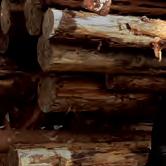












comfortable that a customer can use it safely.”
What does the rent or buy cost analysis look like in the current market?
One of the clearest advantages of leasing is the flexibility to access specialised equipment for short-term or seasonal projects without the need for a long-term investment. Though,
another often-overlooked benefit is financial adaptability – particularly in an uncertain economy with volatile interest rates, where purchasing equipment can feel like incurring an imposing risk.
Purllant highlights this point. He says that hiring equipment offers customers
an affordable solution without long-term commitment – if circumstances change, they can simply return it.
“Take borrowing interest rates, for example – if they’ve jumped from 2% to 4%, someone who was paying £500 a month to finance a machine might now be facing £1k monthly payments.” He adds that leasing avoids that kind of financial strain.
How long do you intend to lease?
There is evidently a school of thought that if you are leasing long-term, and especially if the item has high usage, you should invest and purchase the equipment. Although how long is longterm? Purllant recommends as a rule of thumb, “If you are hiring for more than six months, then you should probably think about buying the equipment.”
Are specialist engineers available locally for unexpected maintenance and repairs?
Beyond avoiding full repair costs for owned broken equipment, another consideration when thinking about a leasing company is the availability
of local field-based engineers for maintenance jobs. Purllant notes that most leasing companies outsource
IF YOU ARE HIRING FOR MORE THAN SIX MONTHS, THEN YOU SHOULD PROBABLY THINK ABOUT BUYING THE EQUIPMENT
repairs due to limited in-house engineering expertise, leaving customers potentially waiting for rented items to be fixed. However, in contrast, Global Machinery Solutions employs 15 field engineer – the largest pool of in-house trained professionals in the supplier market – ensuring there is rapid support for all the company’s leased equipment.
Global Machinery Solutions can be contacted at 01476 568384, by email sales@globalmachinerysolutions.co.uk or globalmachinerysolutions.co.uk
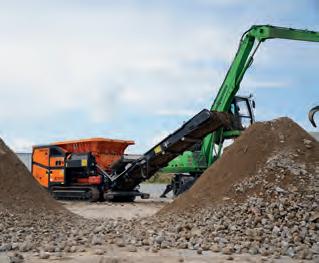
The Pronar MRW 2.65G is a mobile slow-speed shredder. Powered by a 240 HP Volvo Penta Stage V engine and load-sensing hydraulics, Global Machinery Solutions says it delivers fuel-efficient processing of wood, industrial waste, tires and concrete. Its dual-shaft design, featuring replaceable shafts, means it can adapt to different shredding tasks. The tracked chassis and hook-lift frame facilitate easy transportation and manoeuvrability on-site, even in confined spaces.
The MRW 2.65G can handle up to 40t of green or municipal waste per hour and up to 35 tonnes of wood or industrial waste per hour. Its touchscreen control panel offers customisable shredding programmes, and its steel construction ensures durability. Additionally, its advanced soundproofing technology ensures minimal noise emissions, making it ideal for use in noise-sensitive environments such as residential areas.
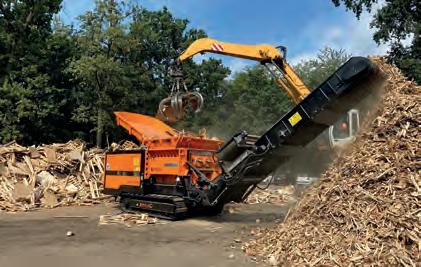
The shredder generates high torque via a planetary gearbox, ensuring effective material processing. Two synchronized 1.7m shafts operate in a 1.72 x 2.34m chamber, achieving throughputs up to 40t per hour, material-dependent. The MRW 2.85G features a tracked undercarriage for mobility on job sites and is transportable by truck and trailer. Its structural components use wear-resistant steel.

STEFAN DAINES, BROKING DIRECTOR OF DAINES KAPP INSURANCE BROKERS, HIGHLIGHTS WHY SPECIALIST INSURANCE IS VITAL FOR ARB WORK’S UNIQUE RISKS AND BUSINESS PROTECTION

Tree surgery is a high-risk occupation.
You operate at height, often in challenging conditions, with powerful and potentially dangerous machinery. However, even with the most meticulous planning and experienced teams, the inherent risks of the trade mean that unforeseen incidents do occur.
The importance of having in place specialist and tailored insurance solutions cannot be understated, as in this sector, generic policies simply won’t cut it.
Employers’ liability insurance
This is a legal requirement for most businesses that employ staff in the UK. Employers’ liability insurance
protects your business if an employee suffers an injury or illness as a result of their work for you and makes a compensation claim.
Your team works in a dangerous environment. From falls to chainsaw injuries and issues from manual handling, the potential for employee injury is significant. Therefore, it will come as no surprise that the largest claims we see are in this area. Employers’ liability insurance covers legal
costs and compensation payments, ensuring a serious accident doesn’t affect your business. It’s important to note even self-employed, labour-only subcontractors are often considered employees for employers’ liability purposes, so it’s vital to clarify arrangements with your broker.
Public liability insurance protects your business against claims made by members of the public (third parties) for injury or property damage caused by your business activities.
This is arguably one of the most critical covers for tree surgeons. We most often see claims from a falling branch or trees damaging third-party property. Without robust public liability insurance, you would be personally liable for these costs, which could include significant compensation awards and legal fees.
Specialist public liability policies for arborists often include vital extensions for working at height, felling operations and work using specialist plant and machinery such as chainsaws, which standard policies may exclude or limit. Factors such as working near roads or footpaths, as well as contractual requirements, can help when deciding the limit of indemnity which should be purchased.
Professional Indemnity insurance
protects you against claims arising from professional negligence, errors or omissions in the advice or services you provide. While often associated with consultants, many arb businesses offer advisory services, such as tree surveys, risk assessments and planning guidance. If your advice proves to be incorrect, leads to a financial loss for your client or results in later property damage, professional indemnity insurance can cover the legal defence costs, and any compensation awarded.
This insurance protects your valuable machinery, tools and equipment against loss, theft or damage. This can include owned plant and machinery, as well as hired-in equipment.
Your business relies heavily on specialist and expensive equipment. We regularly see machinery targeted by thieves, both whilst out on-site and from your premises overnight. Generic policies may not cover specialist woodworking machinery as standard, and many policies have strict security conditions for theft cover to apply.
Hired-in plant cover is also essential, as hire companies hold you liable for damage or theft under contract conditions. Without this cover, you could face hiring charges and replacement costs if hired equipment is damaged, stolen or lost. It is also often much more cost-effective to cover the hired-in plant under your policy, rather than taking out insurance via the hirer.
motor fleet insurance
Commercial motor fleet insurance provides comprehensive cover for all the vehicles used in your business operations, under a single policy. Rather than insuring each vehicle individually, a fleet policy simplifies administration and
often proves more cost-effective, especially for businesses with multiple vehicles.
Your fleet of vehicles is the backbone of your mobile operation. For arborists, it’s particularly important to ensure the policy adequately covers the weight and type of vehicles, any specialist modifications and the carriage of hazardous or heavy loads.
IT’S PARTICULARLY IMPORTANT TO ENSURE THE POLICY ADEQUATELY COVERS THE WEIGHT AND TYPE OF VEHICLES, ANY SPECIALIST MODIFICATIONS AND THE CARRIAGE OF HAZARDOUS OR HEAVY LOADS
There are also cost-effective ways to insure what the insurance industry calls ‘special types’. These are purpose-built motorised vehicles which are primarily machinery or plant. Examples include agricultural tractors, excavators and forklift trucks. Loss or damage to these special types are ordinarily covered under the contractors’ plant policy, therefore we can cover these vehicles ‘third party only’ under the fleet, to meet legislative requirements.

Management liability and directors and officers insurance
This policy protects the directors, officers and senior managers of your company against claims arising from actual or alleged wrongful acts committed in their managerial capacity. Crucially, it protects these individuals personally, whilst the company can pay for the insurance. The policy can also be extended to include cover for the company itself for certain legal liabilities. Even for smaller businesses, directors and managers face increasing scrutiny and personal liability. Claims can arise from various sources, including health and
safety executive regulatory investigations, employment disputes or even corporate manslaughter charges. Coverage provides crucial protection for your assets and covers defence costs, even if the allegations are unfounded.
insurance
Cyber insurance protects against financial losses and liabilities arising from cyber incidents, such as data breaches, ransomware attacks and system failures.
While you might not immediately think of your business as a high-tech target, most modern businesses rely on digital systems. You store client details, employee information, financial records and operational data. A cyber-attack could lead to significant data loss, business interruption and regulatory fines. Cyber insurance can cover forensic investigations, data recovery costs, notification expenses, ransoms – yes, it can pay the ransom bill if you are locked out of your systems – loss of revenue, and legal defence should a third party sue you for a data breach.
Don’t leave your business to chance
The unique and often hazardous nature of the industry means that standard business insurance policies often contain exclusions or limitations that could leave you exposed. A general policy might have height restrictions for working at height, exclude chainsaw operations or not adequately cover specialist plant.
Daines Kapp is a specialist arborist insurance broker, working with insurers who specifically underwrite risks in the sector. We work with businesses of all sizes, and take the time to understand your unique operations, assess your specific risks and then source the most appropriate and competitive cover. The peace of mind that comes from knowing you have robust, specialist cover in place allows you to focus on what you do best – safely and expertly managing trees.
You can contact Daines Kapp Insurance Brokers at trees@daineskapp.co.uk or call 01920 484844


FOR ORGANISATIONS WANTING TO CHANGE FROM TRADITIONAL TREE MANAGEMENT TO A MORE DATADRIVEN AND PROACTIVE APPROACH, EZYTREEV DELIVERS THE ANSWER

Ezytreev is a tree and asset management system that enables medium to large organisations to manage and maintain trees, woodland, and landscape features. Developed by RA Information Systems, a software and IT provider, the system offers a range of features designed to manage tree stock at scale.
From planning to reporting, Ezytreev gives you a smarter, simpler way to manage trees – all in one place:
• Managing current and historical data.
• Support for tree inspections/surveys, risk and eco-benefit calculations
• Work order scheduling and tracking
• Budgeting
• Contractor management
• Processing enquiries

Ezytreev product manager (and arboriculturist) Robert Taylor explains that the system is ideal for local authorities, housing associations, universities, infrastructure companies and other large landowners. Ezytreev offers flexibility and convenience for tree
officers, as well as independent consultancies or contractors managing thousands of trees across multiple sites and clients. He adds: “Contractors are increasingly using our software to deliver a fully auditable, end-to-end, paperless works sign-off process. The system can allocate tasks, manage gang workloads, and monitor progress in real-time – optimising efficiency both in the office and on-site.”
communication with crews
On the contractor and gang management side, Ezytreev offers the Contractor Plus add-on. It simplifies work order sharing and maintains clear communication with service providers throughout projects. From providing smooth data access to allowing contractors to view trees and required work, track job progress, update statuses, capture photos and sign off jobs.
Taylor says: “It is a great addition that streamlines workflows, reduces errors and speeds up task completion. Ultimately, this benefits both the client and the contractor, leading to better service delivery, reduced administrative burden, and improved accountability. Clients want to know that a tree has had work
carried out on a particular day by the relevant crew. External contractors can take a photo and upload it, so the client doesn’t have to go out and check the work has been done. In the end, it provides oversight, auditing and the confidence to pay.”
The platform also enables performance benchmarking, showing monthly productivity comparisons between teams while streamlining contractor invoicing. “At the end of each month, users can instantly generate reports showing key metrics, trees inspected, work completed by contractors or overall progress. It provides clear documentation that all jobs were done to a standard with evidence,” Taylor adds.
He continues by saying that another ezyPortal platform is the Protected Tree Portal. It is an add-on product to Ezytreev’s comprehensive TPO management module, and publishes Tree Protection Orders (TPOs) and application/notification registers, including all relevant documents, and also offers a user-friendly interactive map search tool. As a result, anyone can search for property, check the protection status of trees by viewing TPO trees, the conservation area and any s211 trees on mapping, download the relevant TPO document and view the application history. Any member of the public can also submit an online application for works to trees protected by a TPO and easily generate a sketch plan.
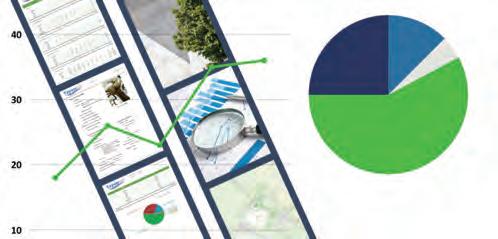
Connecting communities to urban trees

Taylor explains that over the past few years, the software has evolved from a conventional tech product into a cloud-based platform, enabling streamlined on-site use, public sharing of tree data and easier interactions between councils and residents.
He says: “We now have what we call our ezyPortal products. For example, the ezyPortal ‘Community Tree Portal’ is used by councils and other landowners to enable public self-service access to information.”
Whether local residents are looking to identify a tree, uncover its ecological contributions or enquire about a tree, ezyPortal offers an array of insights, encompassing tree species, dimensions, photographs, inspection records and the history of maintenance undertaken on each tree. Resident queries can then be forwarded to Ezytreev, a corporate customer system or a dedicated email address.
“The protected tree portal is helpful to anyone who deals with privately owned trees. That could be a householder who wants to carry out work to their tree, a tree surgeon who wants to ensure they stay on the right side of the law, a solicitor dealing with conveyancing, or a tree warden or other community volunteer interested in the preservation of their local trees. The feedback we are getting from Councils is that it really eases the burden of dealing with protected tree enquiries, as well as requests for document copies.”
Users can create reports, work orders, and other documents, adjust formats and select specific fields as needed. Outputs can include custom branding, such as logos and colour schemes. Tree data can be exported in multiple formats, including Shapefile, TAB, DXF, and KML, for use in external Geographic Information System (GIS) applications.
Ezytreev also comes integrated with an OGC-compliant Web Feature Service. Layers can be added to this service from within Ezytreev and customised to export a range of data fields, which can then be displayed in compatible GIS software.
The system also supports the generation of legal documents such as new TPOs, variations, and revocations of existing orders, as well as works application letters, emails, and site notices.
Taylor adds that a big drive behind the take-up of ezyPortal by organisations and local authorities is the national grant schemes promoting tree planting across the country. “It is to show residents what is happening in their local areas. Some London boroughs plant upwards of 2000 trees per annum, and they want to present that information and show what they are going to plant in the next season. This tool lets them showcase that progress.” For more information: ra-is.co.uk/ezytreev
As for future plans, Taylor states that the team behind Ezytreev plans continued expansion into wider asset management with Ezyasset. Additionally, they will be working to further build on the tools that support stronger links between client and contractor, will be looking to add QR code tagging linked to the public portals, for use (for example) on young trees and in arboretums, and will be bringing further efficiencies and features to the online/offline data collection app, including photo annotation.


Arborella Consultancy provides specialised back-office administration support for the arboriculture sector. Led by director Sophie Rogers, the family-run consultancy streamlines back-office operations, creates packages to manage health and safety compliance and accreditations, and helps businesses prepare for major tenders and projects. Before founding Arborella in 2024, Rogers spent nearly a decade honing her
LOST IN A FOREST OF PAPERWORK? STRUGGLING TO SEE THE WOOD FOR THE TREES WHEN IT COMES TO OPERATIONAL ADMIN, HEALTH AND SAFETY COMPLIANCE, AUDITING OR ACCREDITATIONS? IN CONVERSATION WITH PRO ARB, ARBORELLA CONSULTANCY EXPLAINS HOW THEY CAN CUT THROUGH THE CLUTTER AND MOULD YOUR BUSINESS TO HANDLE THE RED TAPE, SO YOU CAN FOCUS ON THE WORK THAT YOU KNOW
expertise in back-office operations in the arb sector. Her focus? Restructuring the administration of a rapidly scaling arb business, guiding its growth from a team of five full-time arborists to nearly fifty. She describes that this background gives her deep insight into the specific “pain points faced by tree care businesses”, especially in admin, HR, and health and safety compliance. It equipped her with skills to navigate complex accreditation demands, including meeting International Organisation for Standardisation (ISO) 9001 and Arb Association specifications.
Paperwork shouldn’t be the hardest part of tree care Rogers explains that because arboriculture is a hands-on, high-intensity industry, the back office often takes a back seat. However, strong back-office procedures enable tree care businesses to thrive by maintaining compliance, streamlining operations and supporting growth. Additionally, for individual arborists and businesses, gaining accreditation demonstrates safety standards and professional competency while building client trust, though navigating those accreditation requirements can be particularly challenging for small to medium-sized firms.
“As a business owner, you don’t need to be a master of everything; it is about having a good team behind you.”
Rogers continues: “Accreditation services, like Constructionline and the ISO, expect tree surgery businesses to know how to manage administration, and that’s largely not what they got in the game to do. Also, a lot of business owners just don’t have the time for those processes. They are running their businesses, meeting new clients, chasing down leads and working. Most likely, they are trying to fit in admin on a Saturday or Sunday night.
AS A BUSINESS OWNER, YOU DON’T NEED TO BE A MASTER OF EVERYTHING; IT IS ABOUT HAVING A GOOD TEAM BEHIND YOU
It can be overwhelming not having the time or knowing where to start when you are auditing or seeking accreditation. So, with Arborella, I want to be the one who gives business owners the structure they sometimes need.”
How Arborella works step-by-step
In delivering that support, Rogers says, Arborella provides bespoke planning services tailored to the exact goal of every client and the timeline that they have in mind. Building the project around their specific needs and then providing ongoing support to ensure it is keeping on track, whether the timeframe is three months or far longer.
The process starts with a collaborative conversation to uncover an organisation’s specific pain points and objectives.

Arborella then conducts a review of existing administrative systems. The goal is a diagnostic, fact-finding assessment to evaluate if a business has the essential fundamentals in place for the next steps. This includes reviewing admin procedures and health and safety requirements, for example, Lifting Operations and Lifting Equipment Regulations (LOLER) and chainsaw maintenance protocols.
Critical to this process is clear communication about the benefits of change. Rogers notes that when teams understand how streamlined administrative and auditing systems lead to better clients, more exciting jobs and higher wages, their perspective shifts dramatically. Instead of being reluctant followers, they become active participants in driving improvement. She says: “First, we need to get employees to understand the journey a company is going on and the goal that is going to happen at the end of it. Staggering it. Telling them in month one, ‘we need to start doing this’, and two, ‘you will be doing something else.’”
In those weeks or months, clients participate in regular Zoom calls with Rogers to monitor progress, address challenges and celebrate achievements. These sessions are recorded using the AI software Fathom, which provides all

attendees with a detailed transcript, a summary of key discussion points, and a clear action plan.
In the following phases, Arborella creates a tailored project plan with defined milestones, be that preparation for Pre-Qualification Questionnaires or accreditation audits. Rogers emphasises that the approach avoids overwhelming organisations with sudden, drastic changes. “It is done step-by-step,” she explains. “You don’t announce to teams that three new forms will be needed on a Monday every week.” Instead, the focus is on incremental, manageable steps that allow employees to adapt comfortably.
The final phase focuses on sustaining long-term success. Once new systems are implemented, Arborella provides handover training for in-house administrators or provides feedback assistance with hiring, even participating in candidate interviews when needed. Rather than simply walking away at the end of the process. Rogers emphasises that clients “can fall back on us when they need it”, retaining Arborella’s expertise long after the initial project concludes.
“Arborella’s services have been invaluable to my business. Sophie has extensive experience within the industry and is a very helpful contact to have. We are recently established and wanted to be Arb Association approved contractor compliant. We are now fully ready to start the assessments”
“It’s been great working with Sophie and her wealth of experience and knowledge. She’s significantly shortened my learning curve, especially since I’ve only been in the job for a year and still have much to learn”
“As a company, we wanted to streamline our systems and processes and ensure that we were fully compliant before working towards becoming an approved contractor for the Arb Association. Sophie conducted a thorough examination of our current processes and offered invaluable guidance to highlight areas where we were lacking. Arborella were able to significantly improve our health and safety processes to ensure we were fully compliant”
Less stress today, stronger growth tomorrow
“It can be a lonely experience being a tree care business owner when you don’t know anyone to tell you if you are doing the right thing”, Rogers comments.
“What we do is hopefully help eradicate some of that stress.”
For more information visit: arborella.co.uk

In an era when urban trees face increasing threats from development, extreme weather and disease, accurate assessment tools are essential for sustainable tree management. Tree Diagnostics is a specialist provider of technology for arborists, consultants and surveyors. It is leading the way with advanced equipment that helps tree care professionals make informed decisions, preventing unnecessary removals and enhancing tree safety assessments.
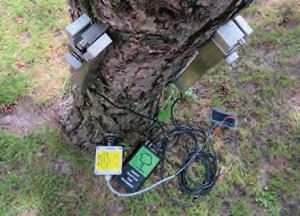
Cutting-edge tools for accurate tree assessments
Tree Diagnostics offers a range of equipment to assess tree health and stability with precision. Among their top-selling products are:
• Arborsonic 3D: A sonic tomograph system that maps wood density and detects decay, helping calculate a tree’s safety factor.
• Microsecond Timer: A single-shot system to report on the internal condition of a tree or the location or extent of features, which can be fed by Bluetooth to a phone app.
• DynaRoot and DynaTree: Dynamic stability testing systems that use real wind data to assess root and stem resistance.
• Ground-Penetrating Radar (GPR): A non-invasive method for root mapping, crucial for subsidence claims and development planning. These tools complement traditional Visual Tree Assessment, providing measurable data that reduces uncertainty in tree management.
Preventing unnecessary tree removals
One of the biggest challenges in risk management is that it often leads to premature tree felling. As the director of Tree Diagnostics, Ian Barnes explains: “An old arb adage was ‘if in doubt, have it out’. Tree Diagnostics provides tree owners and managers with accurate evidence of tree safety, based on a calculated safety factor rather than an estimation of how hollow or thin a stem appears. Our tests can be repeated over time to show an increase or decline in safety, providing an evidence trail. They prevent needless removals – often trees are a lot safer than you’d think.”
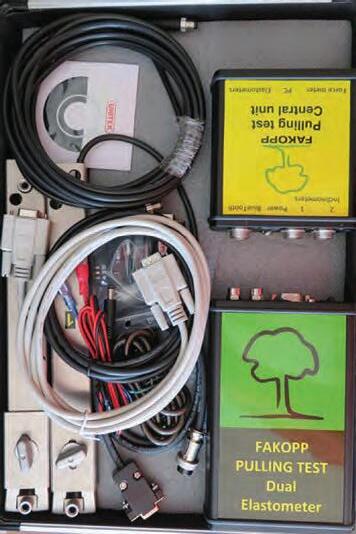
Trees affected by decay or root
damage are often condemned based on visual signs alone. However, tools like Arborsonic 3D and DynaRoot can prove that a tree is structurally sound, allowing it to remain standing safely.
and development use
In cases like subsidence claims, Barnes says GPR technology helps distinguish between live and dead roots, ensuring accurate
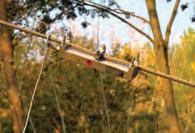
liability assessments. He mentions, “In planning and BS5837 works, Tree Diagnostics can show the actual land occupied by roots and the depth they’re typically found.” He adds, this can help development projects retain trees and provide planners with more confidence for schemes within Root Protection Areas. Similarly, Barnes notes that dynamic wind testing offers a more realistic assessment of tree stability than traditional pull tests, which require calm conditions, multiple workers, and heavy equipment. By using natural wind forces, one arborist can evaluate tree safety in real-world conditions using the DynaRoot or DynaTree Dynamic Stability tests.
The future of tree management
As climate change brings more storms and rainfall, and urban expansion encroaches on green spaces, reliable tree diagnostics are increasingly vital. By integrating technology, Tree Diagnostics helps preserve trees – ensuring lasting environmental and social benefits.
For more information visit: treediagnostics.co.uk

Two decades ago, the prototype of the Arb Pro software emerged not as a fledgling noughties tech startup but from the practical everyday needs of a tree surgery business. Mark Hines, the creator of the software, recalls an industry stuck in inefficient, unproductive technical practices, where simply generating a quote or organising a job involved a “mishmash” collage of Excel spreadsheets, Word and paper documents, phone calls and email overload. To streamline that “clunky” process for his own arb business, Hines took a basic Microsoft Access course, the first step in engineering IT frustration into function. The result was a simple database, although its effectiveness was vocally acknowledged as his company navigated Arb Association accreditations.
“People kept asking, ‘Where did you get this software? It’s making your business run so smoothly.’ Then the penny dropped. I built the first platform and sold it. Amazingly, people were buying it. I then teamed up with software developers.”



Gradually, Arb Pro established itself as a sophisticated cloud-based, nocontract CRM platform tailored to the essential needs of arboriculture professionals. It did not seek to compete with the big-

MANAGING DIRECTOR, MARK HINES , DISCUSSES HIS CUSTOMER RELATIONSHIP MANAGEMENT SOFTWARE, ARB PRO . A TOOL COMBINING ARB ADMIN, HEALTH AND SAFETY, AND JOB MANAGEMENT
tent CRM system providers, but remained embedded in the niche needs of the arb sector. Today, what distinguishes Arb Pro, Hines notes, is not merely its function as a CRM, but its comprehensive consolidation of the tree surgeon workflow into a single, paperless system. It does not simply record – but enacts. It smoothly manages new enquiries, quotations, job management, risk management, including generation of quotations and invoice generation and synchronisation with the larger accounting software platforms – saving hours on the job. At the same time, the software archives client histories and tree locations, tracks staff and oversees personalised marketing campaigns and inventory stocks.
In addition, the software makes use of cloud hosting, providing a unique page for every client stored in a user’s database. The client portal provides a single platform for the user’s customers to view their quotes, accept sent quotes, view pictures, mapping, job progress and history generally.
As a package, Hines explains that the software is broken down into the Arb Office, Quotes and Work components, each highlighting different aspects of the overall value of the product:
“Even if you are a one-man band, you are still going to be spending time in an office,” says Hines. He describes Arb Office as the “umbrella view of your company”, a central database that gathers, organises and sends out information to the client and on the job.
This app is a “diluted part of the Arb Office database,” comments Hines. Here, quotes can be sent to clients on the move, new appointments and customers added, trees can be mapped, and site-specific risk assessments and necessary job tools recorded.
Similar to Arb Quotes, this app, Hines explains, “is for when the quote has been turned into a job.” Users can receive updates on work, see what has been booked, details about the job and what is needed to get it done.
For more information visit: arbprosoftware.com/contact
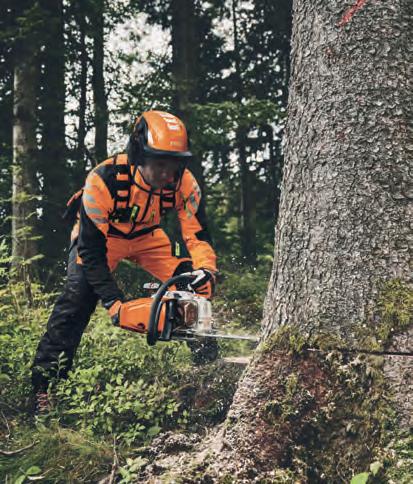
Professionals prioritise performance, weight, durability and reliability in chainsaws. Therefore, power tool manufacturers must always strive to improve user experience through technical advancements and software innovation to meet these demands.
PAUL HICKS, MARKETING
MANAGER
AT STIHL, SHARES INSIGHTS ON THE FUTURE OF PROFESSIONAL CHAINSAWS, KEY FEATURES AND TECH DEVELOPMENTS TO WATCH
displacement, it offers a more efficient real-world experience.
For a further boost, M-Tronic technology regulates ignition timing and fuel metering to adapt to fuel quality, altitude and temperature – ensuring easy starting, consistent power and fast acceleration.
Chainsaws for professional use should deliver strong power-to-weight ratios. This not only guarantees excellent cutting power but also reduces operator fatigue, increasing productivity. Years of research have led to lighter-weight materials. An example is Stihl’s MS 400.1. It has a power-to-weight ratio of the 60cc class, weighs 5.5kg (300g lighter than its predecessor), and delivers 3.9kW power with 62.6cc displacement.
Both power and torque are essential in a professional chainsaw. High torque and rapid acceleration make light work of thick timber. Torque also improves resistance to bogging down, boosting productivity and efficiency. The MS 400.1 has 4.3Nm of torque – more than the previous MS 400. Despite smaller engine
Good airflow prevents overheating during long use. Better cooling reduces stress on the piston, improving the chainsaw’s longevity. The MS 400.1

features a larger magnesium flywheel than earlier models, enhancing cooling. Its new muffler design also contributes to heat dissipation and lifespan.
Comfort not only allows for further productivity but it can also help to enhance safety through optimising manoeuvrability
and reducing user fatigue. Combined with a compact design, low weight, a perfect balance and good weight distribution should be key considerations, as these make for easy handling over long working periods.
These factors led to the development of the MS 400.1. Its design improves handling in the 60cc class. Its ergonomic handles reduce fatigue, and the widened rear handle facilitates plunge cutting.
Fuss-free maintenance
To minimise downtime, a chainsaw should be able to run in tough conditions and be easy to maintain. It’s advised to look for tools that offer longer working times between maintenance, can be cleaned quickly and allow access to key components easily.
Stihl’s MS 400.1 includes an HD2 filter for easy cleaning, an accessible oil pump bolt and a visible 50% fuel level indicator to simplify maintenance and refuelling.
As Stihl and other power tool manufacturers move forward, new technologies are developed and old technologies are improved. These technologies are combined with industry insights – which help produce equipment that can aid productivity, efficiency and, most importantly, safety.
For more information on Stihl’s professional tools and accessories, please visit stihl.co.uk
Sign up to our new weekly email newsletters to receive the latest updates, industry insights and opportunities to contribute. You'll also be the first to receive the digital edition of our monthly magazine, which features interviews with leading arborists and suppliers.


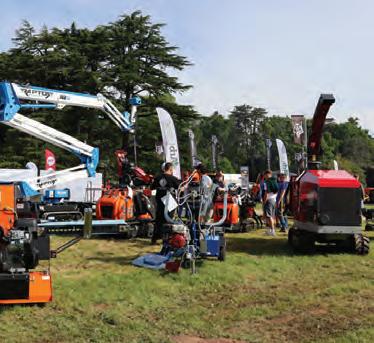



Husqvarna has introduced the 550i XP, a nextgeneration, batterypowered chainsaw built for professional performance. Due to be launched by the end of the year, the chainsaw combines power, smart technology and efficiency.
• Husqvarna’s Active Cool technology improves battery cooling efficiency during both charging and operation. This system helps maintain consistent performance
• The saw is equipped with an X-Force bar, which is noted for being strong yet lighter than most alternatives. It accommodates bars ranging from 13” to 20”, with UK models typically stocked with 15”, 18”, or 20” bars. The heated-handle G version is supplied with a standard 15” bar, though any other X-Force bar can be swapped at a Husqvarna dealer.
• A software-based control system enhances startability and operational performance, particularly during starts and stops under load. This control system reduces overall weight and vibration while improving efficiency compared to traditional mechanical clutches. A dedicated graphic display offers real-time monitoring of battery level, tool status, and system diagnostics, along with user-adjustable settings for heated handles and SavE™ mode. The interface provides operational feedback and retains the last-used configurations for handle heating and SavE mode, allowing for seamless restarts without manual readjustment.
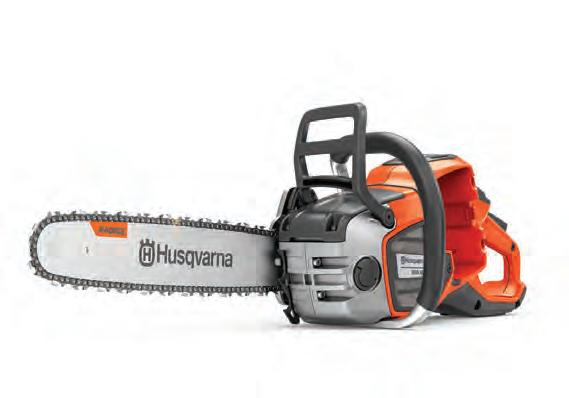
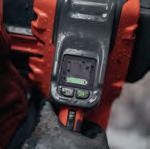
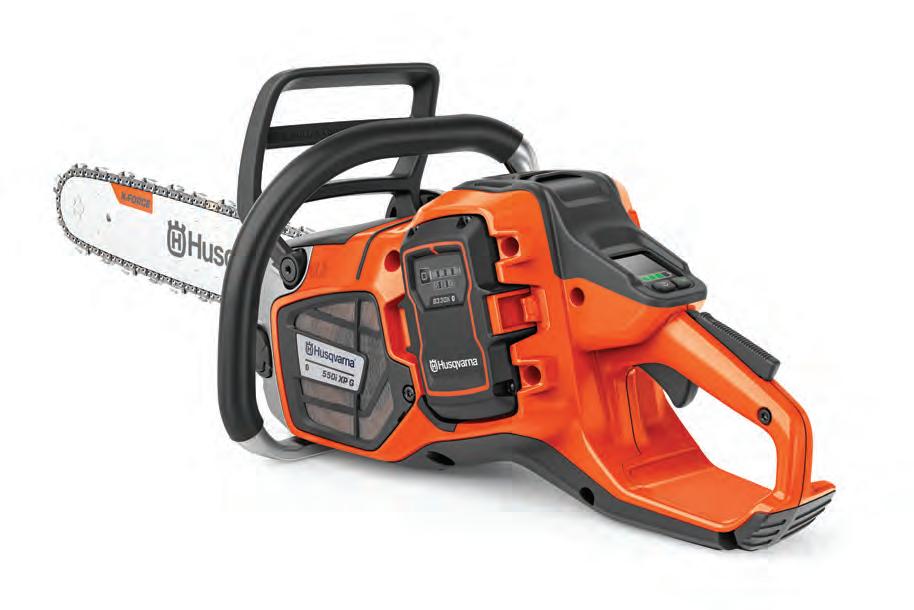
• The equipment is powered by a 36V battery system, providing flexibility in runtime and cost based on user needs. Husqvarna recommends the B330X battery for its balance of strong performance and lightweight manoeuvrability. The newer B540X battery offers enhanced runtime and supports longer guide bars for applications requiring higher power and extended operation. With an output of 3.4 kW, the B540X is recognised as one of the most effective battery options in its class.
• Models designated with ‘G’ include heated handles that maintain hand warmth for improved comfort and productivity. This feature also provides a steadier grip, contributing to safer tool operation.
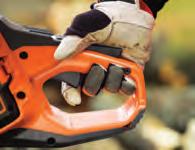

ENVIRO
For some arb businesses, working with large corporations or insurers often means initially navigating endless paperwork and, in the end, chasing invoices. Enviro Trees, founded in Australia in 2010 and now expanding in the UK, simplifies this by connecting vetted local arborists, its ‘Tree Partners’, to commercial clients.
Enviro Trees is a tree management service that secures and manages corporate contracts, providing Tree Partners with steady, high-value work. Partners maintain operational independence but gain jobs typically out of reach for independent businesses. Clients, meanwhile, access quality tree services at competitive rates without subcontracting risks.
Enviro Trees isn’t a job board; it’s a managed network ensuring reliability for clients and opportunities for arborists.
Why should you consider becoming a Tree Partner?

Chief operating officer of the UK, James Murrey, says: “Enviro Trees gives arb businesses access to a work stream that they might not otherwise be able to tap into.” An example he gives is an insurance company: “These companies do not want to allocate resources to manage tree service businesses, as well as all the other things involved in managing a property
insurance claim,” he adds. In such cases, Enviro Trees provides a centralised model for clients to utilise and allocate their preferred network of Tree Partners to get the job done.
YOU QUOTE THE WORK USING YOUR RATES, AND IF APPROVED, YOU COMPLETE THE JOB AND GET PAID BY US, ON TIME AND IN FULL
Murrey notes that arb companies have “nothing to lose from contacting Enviro Trees. It is not going to cost anything. It is no-cost, no-commitment.”
“You quote the work using your rates, and if approved, you complete the job and get paid by us, on time and in full.”
He emphasises that there is zero risk to signing up, no chasing invoices and as the company grows, so do Tree Partners’ job opportunities. “Even if you are busy now,” Murrey says. “There could come a time when you do not have a lot of work booked, and insurance is a very resilient revenue stream to have your foot into.”
Each Tree Partner candidate is comprehensively vetted for insurance, safety and qualifications. Partners are then tracked for real-time performance data, from job speed to customer feedback, to maintain quality. This ensures reliable service for clients and fair opportunities for top arborists.

“We have been working with Enviro Trees for over a year now. I was sceptical at first, but that soon wavered once we started moving forward with work. They are such an easy company to work for, you’re very much in a working relationship with them”
“Being partnered with Enviro Trees has been a great addition to our client portfolio, allowing us to spread risk by entering a new sector. They are a stand-up company who we have never once had to chase an invoice with”
“Working with Enviro Trees has been a genuinely positive experience. The projects we’ve been involved in are often challenging, but they’ve also been financially and professionally rewarding”
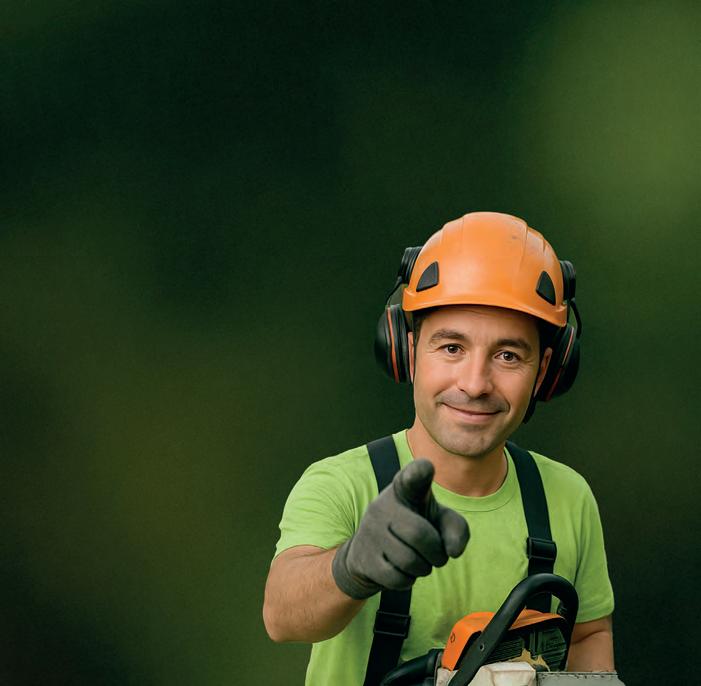


Discussions about neurodiversity in our workplaces begin with one basic truth: every mind operates differently. It’s not about labels or diagnoses; rather, it is the straightforward acknowledgement that our thinking, focus and communication styles vary naturally from colleague to colleague.
\
• ADHD Aware (2024) estimates 15% of Britons are neurodivergent.
• Birmingham University (2024) found frequent overlap between conditions (e.g., ADHD-autism links)
• A Pearn Kandola study (2024) revealed that 36% of neurodivergent employees feel comfortable requesting workplace adjustments, versus 42% who don’t
Put simply, there is no one ‘normal’ brain. However, neurodiversity is an umbrella term framing those natural, commonplace variations in how people think, communicate and process information. It includes differences in sociability, learning styles, attention and emotional regulation, often associated with conditions like
autism, attention deficit hyperactivity disorder (ADHD), dyscalculia and dyslexia.
Nonetheless, regardless of any cognitive differences, when properly supported, each team member can thrive and contribute meaningfully to a business’ success. This principle is central to Peter Wharton’s, MICFor (Chartered Arboriculturist), recognition as the 2025 Professional Forester of the Year. It equally drives his ongoing work: raising awareness of neurodiversity challenges in arboriculture and reshaping industry standards.
He is the founder of Wharton Natural Infrastructure Consultants, backing the arb and ecology sectors. Since 2018, Wharton has also assessed candidates for the Institute of Chartered Foresters’ Professional Membership Examination, proactively adapting examination processes to remove barriers for neurodivergent professionals.
Championing a neuroinclusive industry
“As a kid, I was diagnosed with dyslexia,” says Wharton. At the time, he explains, dyslexic children were treated as the “thickos of the class”, and other children who we might now consider to be autistic or having ADHD were the “naughty kids”. After leaving school, he worked his way up through the tree care sector. Yet even as a professional, Wharton encountered the same dismissive attitudes of his school years. “People were being marked down for assessments because spelling was

incorrect and grammatical errors, and people were losing out because of it. There was a big stigma around dyslexia.”
Later in his career, a colleague’s comment, “Have you ever considered you might have ADHD? You should research stonewalling”, prompted a further turning point. “Stonewalling is a trait of ADHD. It is where I could be having a full-on conversation, and I would be looking
I THINK ALL BUSINESS OWNERS SHOULD HAVE NEURODIVERSITY ON OUR AGENDAS TO GET THE BEST OUT OF PEOPLE
straight through you – everything is going in, but you would not think I was present,” says Wharton. However, over time, he says this trait was becoming more apparent to him, so he researched and eventually decided to get a diagnosis.
“The funny thing with ADHD is you need impulsivity, quick decisions, but the NHS diagnosis waiting list is about three years,” he adds. Eventually, he did get a diagnosis for inattentive ADHD, which is characterised by difficulties in focus, but without the hyperactivity typically associated with the condition. “From that
point, I thought ‘how many other people in the industry – a tree surgeon or consultant – have similar experiences?’ In our sector, we need to start speaking up about neurodiversity.”
Neuroinclusion is not a box to be ticked; it is a practice Wharton emphasises that the first step, for both new and existing professionals, is fostering openness about their conditions in the workplace. “At the Institute of Chartered Foresters’ Professional Membership Examination board, we are trying to break down barriers. So, people are comfortable saying, ‘I have a condition’. Because if we know that, as assessors, we can adapt to how we do things. We might set up the room differently, we might be less formal, or we might think about how we can show that person in the best light.”
He continues that neurodivergence should not be an industry “faux pas”; leaders and professionals should be open about and normalise this conversation. Wharton says, “The more it becomes normalised, the less people will be worried about what people will say. And by doing that, we can bring out the benefit of it as well as a more inclusive way of doing things.”
“I think all business owners should have neurodiversity on our agendas to get the best out of people.”
For Wharton, unlocking an organisation’s full potential starts with getting the optimal results from employees, whether through remote work arrangements or other flexible solutions. “We want people to work at their very best,” he says. So, at Wharton Natural Infrastructure Consultants, employees can make small adjustments to their work routine if needed, such as coming into the office an hour or so later and making up the time later. He adds that this allows “employees to manage their own time” while providing “structure.”
Implementing reasonable adjustments is an easy, small step for employers, especially as “getting a diagnosis” and speaking to your boss about it is a much
larger step, Wharton explains. However, for him, the big lesson for the industry is appointing a company neurodiversity champion. “That champion has to have a voice in the company, to say ‘this is what
CHAMPIONING NEURODIVERSITY HAS TO BE IN THE CULTURE OF THE COMPANY, AND THAT CULTURE SHOULD BE OPENNESS
we need to do.’ Similar to mental health, we need to think beyond awareness weeks, forget the yearly events and say this is what we as a business are continually doing on this subject.”
“Championing neurodiversity has to be in the culture of the company, and that culture should be openness.”
Shaping the future of work
Wharton’s journey – from dyslexic student to award-winning neurodiversity champion – proves an arb industry and more broadly a society refocusing on bringing out the untapped strengths of individuals. His efforts to dismantle barriers in arboriculture, from reimagining exams to fostering workplace flexibility, reflect that broader shift: industries are moving beyond rigid norms to prioritise individual strengths. Just as mental health has become

• Establish clear structures and accommodate reasonable adjustments to support diverse working styles.
• Designate a neurodiversity champion to advocate for inclusive practices and provide peer support.
• Introduce psychometric assessments (e.g., DISC profiling) during recruitment and onboarding to enhance team communication by understanding behavioural preferences.
• Leverage assistive tools (such as AI notetakers like Fathom) to improve accessibility.
• Offer private neurodivergent diagnostic services (companyfunded) to bypass lengthy NHS waiting times and ensure timely support.
a critical workplace conversation, neurodiversity can also now drive change, prompting honest discussions and redefining team leadership. For businesses, the takeaway is clear: inclusion isn’t about a checklist but about empowering every employee to thrive. The future belongs to those adaptable organisations that value minds, not moulds.
For more information visit: wnic.co.uk

When starting out, the largest companies in arb often look like the ultimate authorities in the industry. This image can be misleading. In reality, as a new business you want to take a different approach to promoting your services. Early-stage marketing is challenging, but with this guide, it needn’t be.
Here’s your best path
Focus on what’s trackable, what already works for you and what works for others. Then, start thinking like a marketer and precisely like your ideal client. And yes –focus on what ‘builds trust’, not on how many clients you’ve served or how many trucks you own. You might have just five clients and one truck. It’s about what you ‘offer’ in comparison and the ‘values’ you
represent. That doesn’t mean offering the cheapest quote. You need to shape your offer into something your ideal client can’t refuse or, at the very least, trusts more than your competitors. Importantly, make it ‘personal’, ‘bold’ and ‘valuable’. First, identify your target audience. Then, track your interactions and results. Finally, nurture trust to create lasting connections.

TRUST (What builds a real business)
Create offers with time or service guarantees, bonuses and personalised, locally relevant services.
• Offer management plans and ongoing maintenance to encourage long-term work.
• Use personalised leaflet drops in areas you know need your service.
• Build a website that speaks to your ideal clients, reflects your values and converts visitors into leads.
• Run digital campaigns that consistently drive ideal clients to your site, phone or lead funnels.
LUCK (What holds you back)
• Relying only on referrals.
• Posting aimlessly on social media.
• Trusting marketers who don’t know what a stump grinder is.
• Posting in groups without strategy, targeting or professional messaging.
• Blending in with others instead of standing out with precise positioning.
How do I start formulating a plan?
Now that you know what needs to be done, it’s time to take the first step – making a plan. Grab a notebook, open Google Docs or use your phone’s notes app. Write a short paragraph answering these five questions:
1. Who am I? Explain your background and experience.
2. What is my company? Covering your offerings.
3. Who is my ideal customer? Describe their location, age and income.
4. What marketing is currently working? Identify where your clients are coming from.
5. What are my top three to five priorities to focus on over the next 6–12 months?
Research your competition:
Once you have answered those questions, explore competitors of a similar size. What strategies are effective for them? List the approaches they employ in relation to those questions. Reach out – it’s an excellent way to learn. A pro tip is to concentrate on small to mid-sized competitors, as larger brands often depend on strategies that may not translate well at smaller scales.
Build your offer and plan
Create an offer tailored to your ideal customers, focusing on local communities where you can foster lasting relationships. Next, develop a quarterly business plan –starting with marketing and strategy and concluding with a clear outline for delivering your service and ensuring client retention.
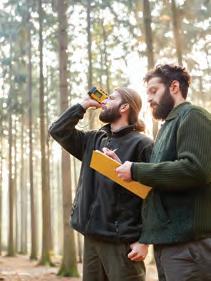
Coming off the tools’ doesn’t mean leaving the industry; most arborists and climbers reach a stage in their career where they are ready to transition from hands-on work to more technical or managerial roles. This viewpoint shift can open up a range of new career opportunities.
As a starting point, CTC Recruitment advises that under the current accreditation framework, the most effective, ideal pathway to securing an interview for the professions listed below is by obtaining a Level 4 Arboriculture qualification. Although a Level 3 qualification is acceptable in most cases. A Level 4 qualification can be achieved through remote learning while in employment. Breaking it down in more detail, the potential career pathways are:
• Consultancy This role involves advising on tree management, assessing health/ safety risks, and writing technical reports. Strong analytical and communication skills are essential, particularly for evaluating tree safety and amenity

value. Many consultants specialise in areas like risk assessment or planning before establishing independent practices.
• Tree officer A tree officer (or arboricultural officer) oversees the management, surveying and preservation of community trees. This position offers climbers a natural progression into public-sector arboriculture.
THIS VIEWPOINT SHIFT CAN OPEN UP A RANGE OF NEW CAREER OPPORTUNITIES
CTC Recruitment says applicants should highlight their practical climbing experience on their CV. This hands-on background demonstrates valuable tree knowledge that complements the technical aspects of the role.
• Trainer Share your expertise as an arboriculture assessor or teacher. Ideal for those who enjoy mentoring, this role keeps your industry-connected while shaping future professionals. Pursue assessor training through Lantra or the City and Guilds Land Based Services, or explore vocational/academic teaching by networking with sector professionals to refine your CV.
• Arboriculture surveyor Transition naturally from climbing to surveying,

leveraging your hands-on experience to assess tree health and safety. Specialise in amenity or utility surveying (roads, rail, water). CTC Recruitment recommends candidates should enhance their CV with Professional Tree Inspections (PTI) and Quantified Tree Risk Assessment (QTRA) certification.
• Management Progress to leadership by managing teams, offices or your own business. Typically, it requires five-plus years’ experience, strong communication and IT skills. Targeted courses, such as Tree Risk Assessment, Lifting Operations and Lifting Equipment Regulations compliance, Professional Tree Inspector credentials and health and safety training, can strengthen your candidature. CTC Recruitment advises people interested in this role to highlight their transferable skills on their CV and explore flexible distance learning options to upskill while remaining employed.
• Tree planting officer Local authorities and horticulture businesses are increasingly listing openings for planting supervisors. Professionals interested in this role should have knowledge and experience in tree planting, including species choice and aftercare. The role involves sourcing trees, choosing planting sites, instructing contractors and ensuring an aftercare programme is in place and adhered to.


In her own words, Beccy Blackman of CTC Recruitment shares insights on the key challenges arborists face when transitioning from fieldwork to technical or managerial roles.
TECHNICAL CAREER PATHS: TREE OFFICER, SURVEYOR AND JUNIOR CONSULTANT ROLES
For the technical career pathway, if you have the necessary academic qualifications, the next biggest challenge is to persuade the hirer that you are able to do the job.
You will need to confirm your ability to: demonstrate tree identification skills, operate handheld tree data capture systems, proficiently use Microsoft Office and other computer software, work autonomously, communicate professionally across all levels and be able to drive.
Our advice at CTC Recruitment is to start by getting experience surveying trees and listing this on your CV. Ask your current employer to give you some surveying or quoting tasks (without changing your ordinary schedule) so you can demonstrate this. It is also a good idea to volunteer with an organisation that undertakes surveys; for example, with I-Tree, The Woodland Trust, National Trust, Trees for Cities, etc. Likewise, you could contact your local authority and ask if you can do some shadowing of the tree officers to learn about the role. In the interview, be prepared to complete a tree identification test. You are encouraged to bring the tools you would typically use in the field, such as a reference book, diameter at breast height tape, probe and a hammer. In addition, we recommend becoming an
Associate Member of the Arboricultural Association (AA). Membership provides access to free publications, events and seminars, which provide excellent resources for maintaining continuous learning in the field.
However, if a Tree Officer role is your preferred role, then become a member of the London Tree Officer Association (LTOA) and attend their events and do some networking.
You can also sign up with CTC Recruitment to hear about temporary Tree Officer roles. Local authorities often fill a long-term vacancy for a tree officer by filling it with a ‘temp’

while they advertise the permanent vacancy. If you get offered this temp role, it is often the start of a career as a tree officer, as you get to apply for the permanent role and make contact with the hirer, as well as build some solid experience on your CV.
MANAGERIAL CAREER PATHS: ARB SUPERVISOR, ARB CONTRACT MANAGER AND ESTIMATOR ROLES
The primary challenge for the managerial career pathway is demonstrating your ability to be in charge of long-term business strategy and day-to-day operations. These roles require oversight of staff, physical resources (plant/machinery/ premises) and business development
(quoting/tendering/securing work). Furthermore, you will coordinate work programming and permissions, ensure compliance (health/safety/quality standards), and manage financial processes like invoicing, supplier payments and accounts.
At CTC Recruitment, we recommend expanding beyond your core arboricultural expertise, gained through years in senior hands-on roles like team leader or foreman. To progress further, you should also build skills in employee management. This includes recruitment, payroll and qualifications. Another key area is plant and machinery oversight, covering maintenance, repairs, and hiring. Business development is also important, particularly advertising, tendering and quoting. Likewise, you will need a solid grasp of compliance, including the arb Industry Code of Practice (ICOP), Lifting Operations and Lifting Equipment Regulations (LOLER) and risk assessments. Finally, financial processes like invoicing and accounts payable are essential.
You can gain a bit of insight by asking questions at your current place of work; maybe ask to take on extra responsibility so you can evidence sound experience at an interview. Be open to working flexibly in relation to work hours; a manager sometimes stays late to resolve issues for work going ahead the next day.

CTC Recruitment is always pleased to take applications from anyone looking for the next step in their arb career. Contact us at admin@ctcrecruitment.co.uk or call for an informal chat on 01743 344466 Please visit: ctcrecruitment.co.uk
FÖRST 6" & 8" CHIPPERS
Petrol or diesel. Tracked or towable. Relentless power, engineered to keep pushing.
Backed by outstanding customer support that’s with you every step of the way.
#ThisIsFörst
forstglobal.com 01264 721790